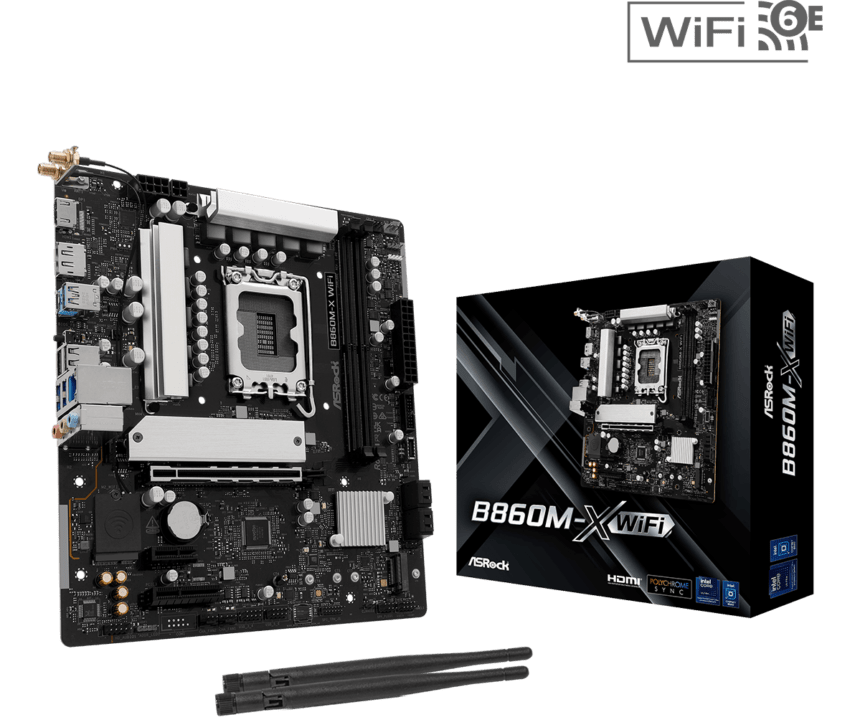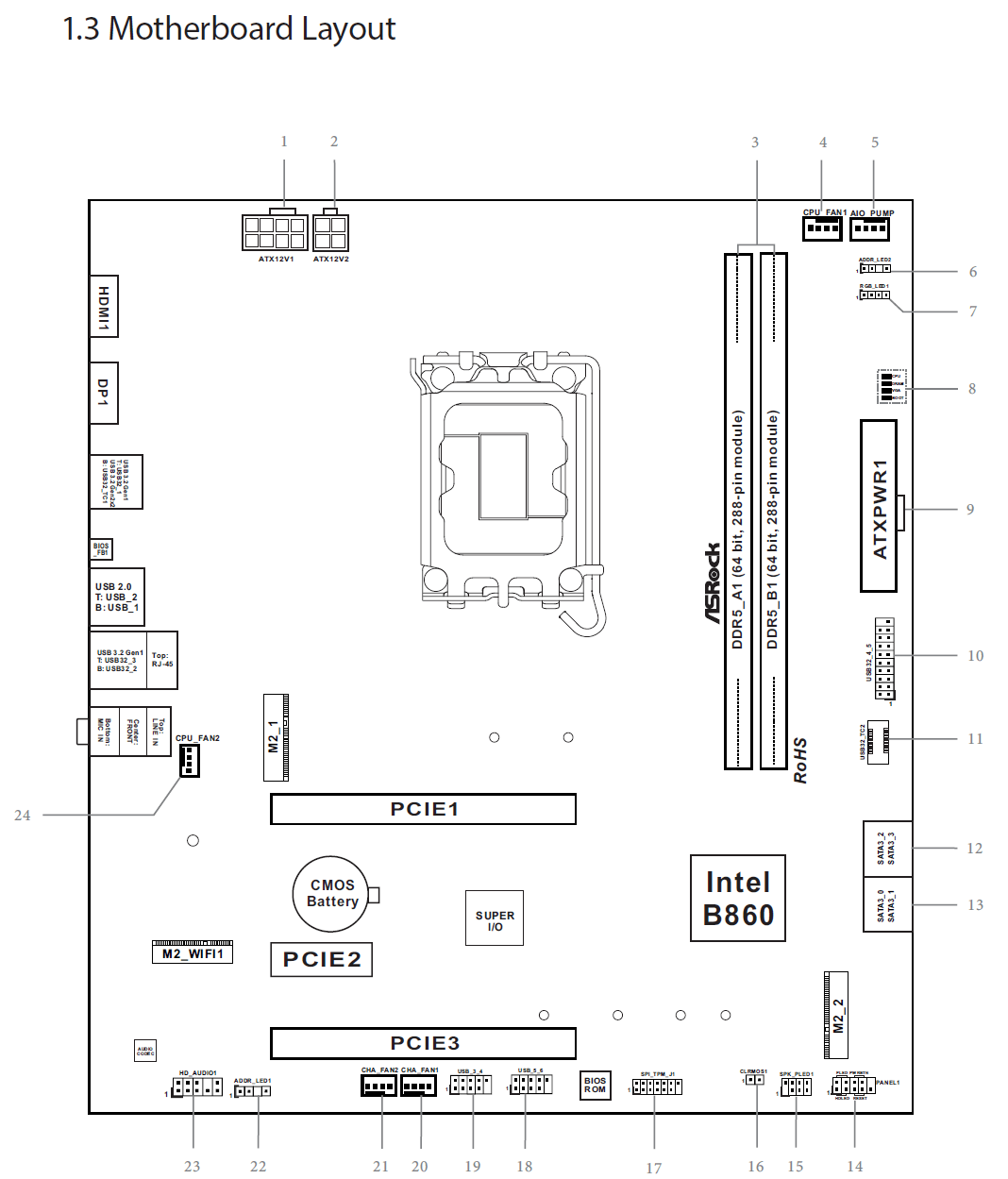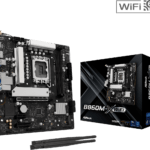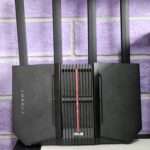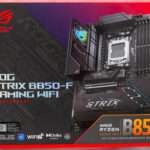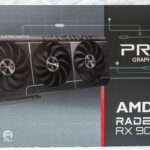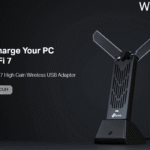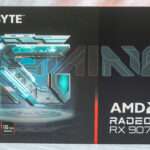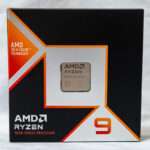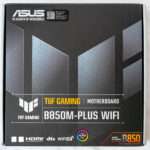The ASRock B860M-X WiFi is a budget-friendly Micro ATX motherboard designed for users who want a balance of performance, connectivity, and affordability. Built on the Intel B860 chipset, it supports the latest Intel Core Ultra processors and DDR5 memory, making it a solid choice for mainstream users and budget PC builders. With features like Wi-Fi 6E, 2.5Gb LAN, PCIe 4.0 expansion, and dual M.2 slots, it offers great value without compromising essential capabilities. In this review, we’ll explore its key features, performance, and overall value to see if it’s the right motherboard for your next build.
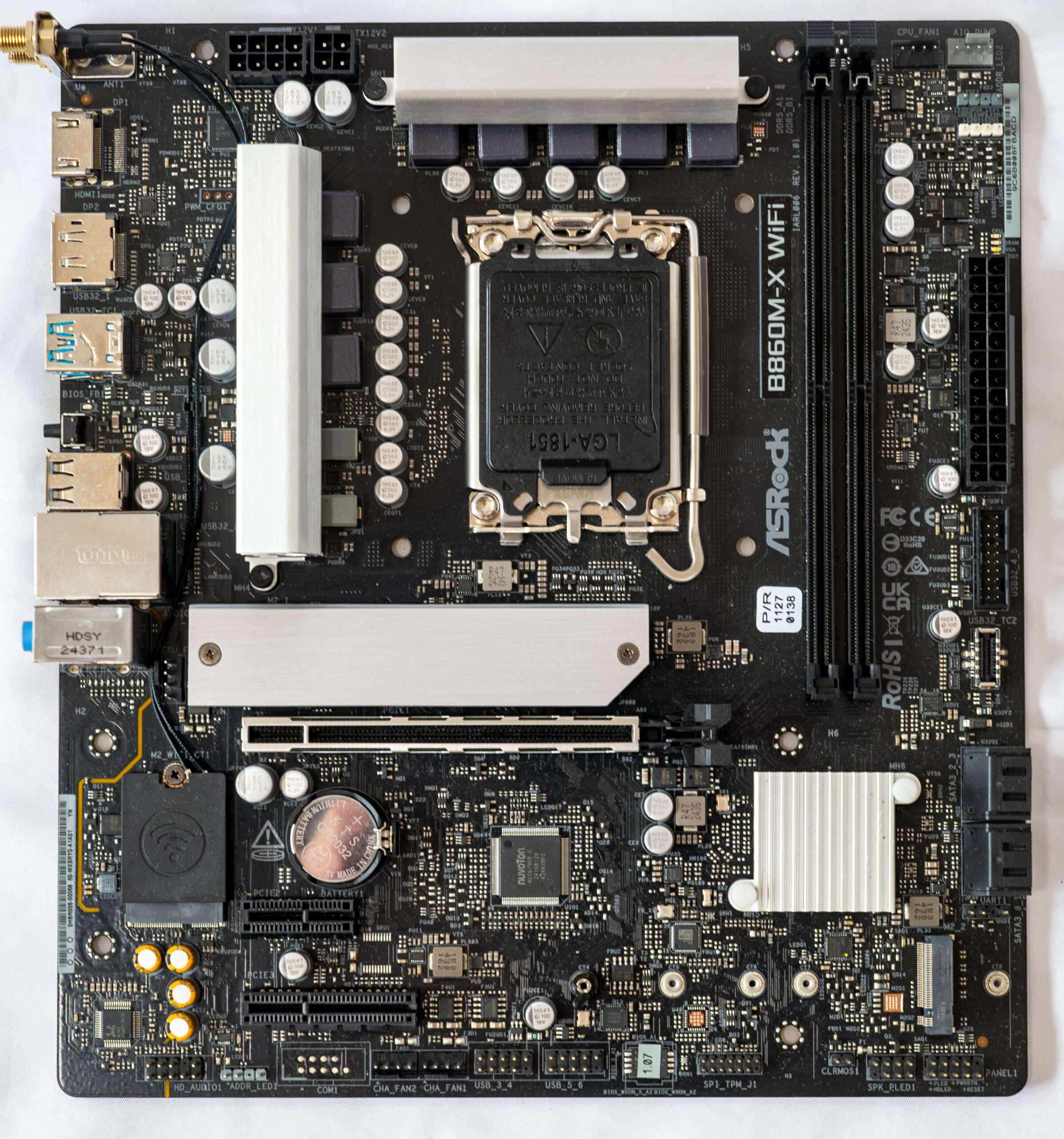
On the back features several controllers along with some standard circuitry. The PCB is meticulously crafted, with all soldering points smoothed and polished to eliminate sharp edges. There are no protective backplate on the VRM area.
The ASRock B860M-X WIFI motherboard follows the MATX form factor, measuring 24..4cm x 22.6cm, and features an 6-layer 2oz copper PCB design.
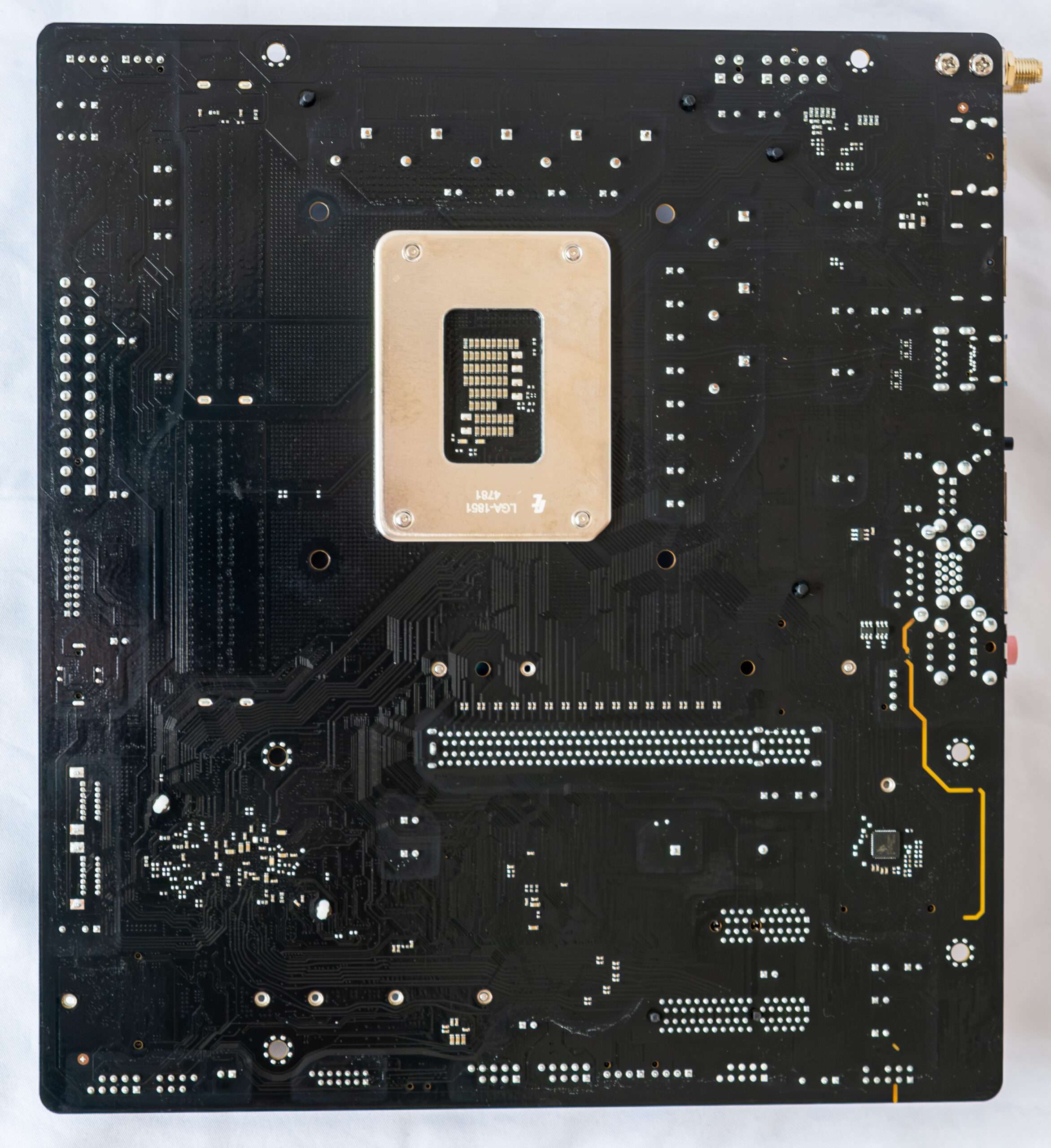
Let’s look again at the comparison table of the last 4 generations series system chipsets.
| Chipset | B860 | Z890 | Z790 | Z690 | Z590 |
| Compatibility with Intel processors | Core Ultra 2xx | Core Ultra 2xx | Core 14/13/12 | Core 14/13/12 | Core 11/10 |
| PCIe Version (CPU) | 4.0 & 5.0 | 4.0 & 5.0 | 4.0 & 5.0 | 4.0 & 5.0 | 3.0 (10th Gen) or 4.0 (11th Gen) |
| Number of PCIe lanes (processor) | 20 versions 5.0 & 4 versions 4.0 = 24 | 20 versions 5.0 & 4 versions 4.0 = 24 | 16 versions 5.0 & 4 versions 4.0 = 20 | 16 versions 5.0 & 4 versions 4.0 = 20 | 16 (10th Gen) or 20 (11th Gen) |
| PCIe version (chipset) | 4 | 4 | 3.0 & 4.0 | 3.0 & 4.0 | 3 |
| Number of PCIe/SATA lanes (chipset) | 20 4.0 & 4 SATA = 24 | 24 4.0 & 8 SATA = 32 | 20 v4.0 & 8 v3.0 or 8 SATA = 28 | 12 v4.0 & 16 v3.0 or 8 SATA = 28 | 18 version 3.0 or 6 SATA = 18 |
| Number of SATA 6.0 Gb/s ports up to | 4 | 8 | 8 | 8 | 6 |
| DMI version | 4 | 4 | 4 | 4 | 3 |
| Number of DMI lines | x4 | x8 | x8 | x8 | x8 |
| RAM generation | DDR5 | DDR5 | DDR4 & DDR5 | DDR4 & DDR5 | DDR4 |
| Number of RAM channels | 2 | 2 | 2 | 2 | 2 |
| Maximum number of RAM slots | 4 | 4 | 4 | 4 | 4 |
| Maximum RAM | 256 GB DDR5 | 256 GB DDR5 | 256GB DDR5/128GB DDR4 | 256GB DDR5/128GB DDR4 | 128 GB |
| USB4 ports (40Gbps)(processor) up to | 1 | 2 | – | – | – |
| USB 3.2 Gen 2×2 ports (20Gbps) up to | 2 | 5 | 5 | 4 | 3 |
| USB 3.2 Gen 2×1 ports (10Gbps) up to | 4 | 10 | 10 | 10 | 10 |
| USB 3.2 Gen 1×1 ports (5Gbps) up to | 6 | 10 | 10 | 10 | 10 |
| USB 2.0 ports up to | 12 | 14 | 14 | 14 | 14 |
| Built-in Wi-Fi support | Wi-Fi 7 | Wi-Fi 7 | Wi-Fi 7/ WIFI 6E | Wi-Fi 6E | Wi-Fi 6 |
Note that the B860 has 20 PCIe 4.0 lanes plus a maximum of 4 SATA lines, meaning that the B860 chipset essentially has 24 PCIe lines, but 4 lines for SATA ports cannot be reconfigured for other use (while the Z790 simply had 8 PCIe 3.0 lanes, and they could be used for up to 8 SATA ports).
The Core Ultra processors have a total of 24 PCIe lanes (20 of which are version 5.0, and 4 are version 4.0), and there is also a built-in Thunderbolt 4 controller, which essentially gives us 2 USB4 ports (up to 40 Gb/s each). Due to the DMI being limited to 4 lanes instead of 8 on the Z890, Thunderbolt 4 support is restricted to 1, and the number of other USB ports has been reduced.
With the transition to a tiled layout, Arrow Lake brings improvements to nearly every component of the processor, including the compute cores, graphics core, input-output interfaces, and the addition of an NPU neural processor. Leveraging one of the most advanced manufacturing technologies—TSMC’s 3nm process—it’s no surprise that expectations were high for improved energy efficiency and reduced heat generation compared to the Raptor Lake series. Notably, Raptor Lake, though significantly refined, still relied on Intel’s older 10nm process. As a result, Arrow Lake was anticipated to deliver a substantial boost in both performance and energy efficiency.

The Compute tile is the centerpiece, housing eight high-performance Lion Cove P-cores and 16 power-efficient Skymont E-cores, with improvements to these cores discussed below. All cores are interconnected via a ring bus and share a 36MB L3 cache for data exchange. Each of the eight P-cores is equipped with a dedicated 3MB L2 cache, while the E-cores are organized into clusters of four, with each cluster sharing a 4MB L2 cache.

The memory controller in Arrow Lake has also been updated, dropping support for the DDR4 standard. Unlike Alder Lake and Raptor Lake, which featured controllers for both DDR4 and DDR5, the new architecture exclusively supports DDR5. This shift eliminates the outdated DDR4 standard and, in theory, allows for slightly more efficient operation of DDR5 subchannels.

The graphics core components in Arrow Lake are distributed across the Graphics and SoC tiles. The Graphics tile serves as the primary component, housing the elements of the graphics pipeline and the computing units located within the Xe cores. Meanwhile, the SoC tile contains the display and media processing engines, as well as the display output interface.
The graphics core in Arrow Lake-S is based on the Xe-LPG graphics architecture, which was first introduced in Meteor Lake mobile processors. This architecture is a significant upgrade over the Xe-LP found in Raptor Lake desktop processors. The Graphics tile features the Xe-LPG core, built on TSMC’s advanced 5nm N5P process. It includes a Xe Render Slice with four Xe cores, comprising 64 EU streaming units, which correspond to 512 unified shader units in competing solutions.
Unlike other architectures in the Xe family, the integrated graphics controller in Arrow Lake lacks XMX blocks for AI tasks. Instead, AI acceleration is handled using DP4a instructions on the main computing units. Despite this limitation, the same XeSS technology will still function, albeit at a somewhat reduced performance level.
The media engine in Arrow Lake-S offers hardware acceleration for video decoding at resolutions of up to 8K at 60 FPS in 10-bit HDR format, with support for VP9, AVC, HEVC, AV1, and SSC video formats. It also supports hardware-accelerated video encoding at resolutions up to 8K at 120 FPS in 10-bit HDR, compatible with VP9, AVC, HEVC, and AV1 formats.
The display output engine can drive up to four displays simultaneously, supporting HDMI 2.1, DisplayPort 2.1, and eDP 1.4 connections. It delivers output signal capabilities of 8K HDR at 60 Hz or 2560×1440p at up to 360 Hz for a single display, and 4K HDR at 60 Hz across four displays.
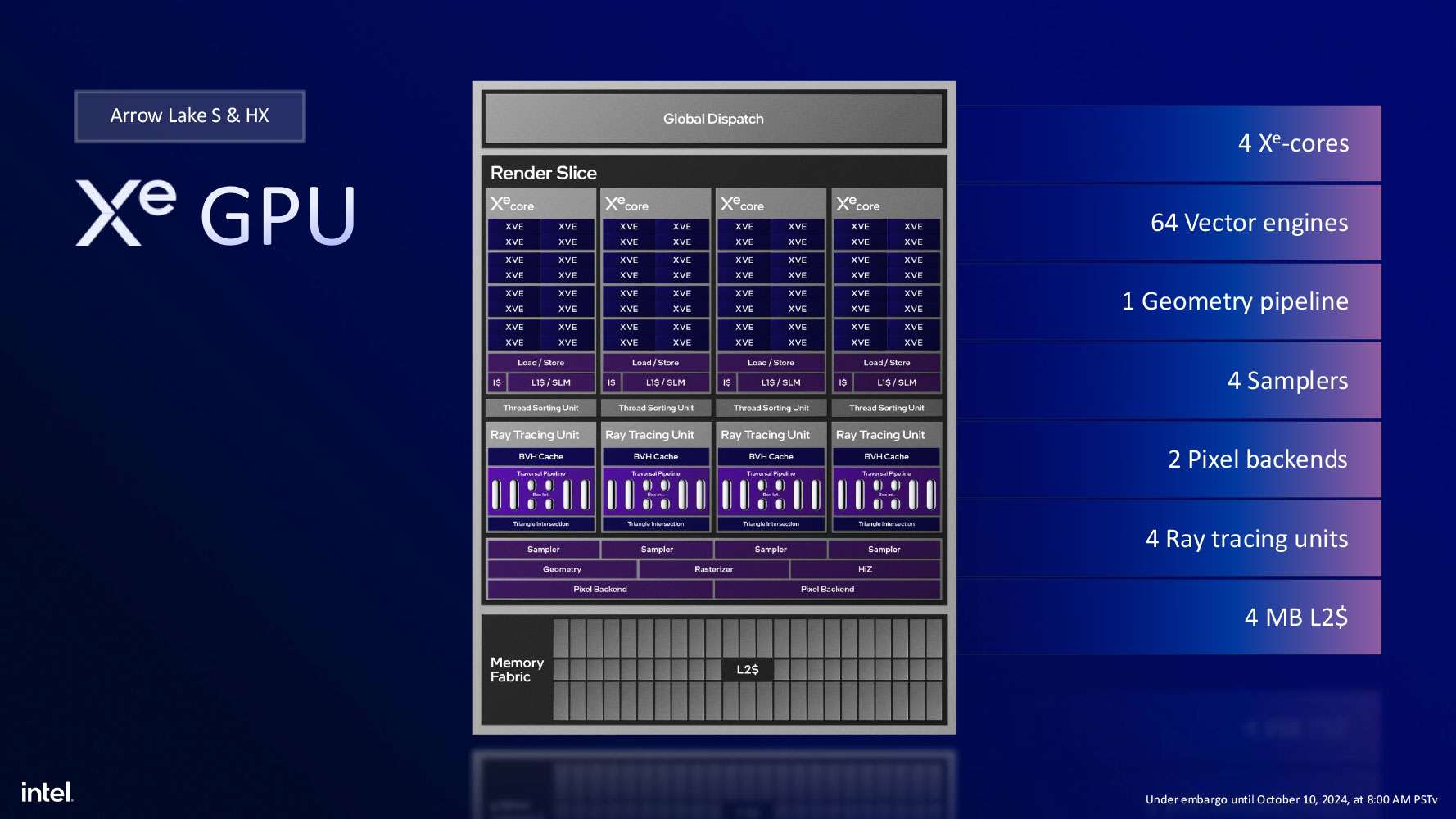
Overall, at the time of their release, Arrow Lake processors stand out as the most technologically advanced solutions in the desktop CPU market. They feature a sophisticated multi-chiplet design, utilize the most advanced manufacturing process for the main compute die, and integrate powerful GPU and NPU capabilities. Initially, five processor models were launched, offering varying specifications and price points.
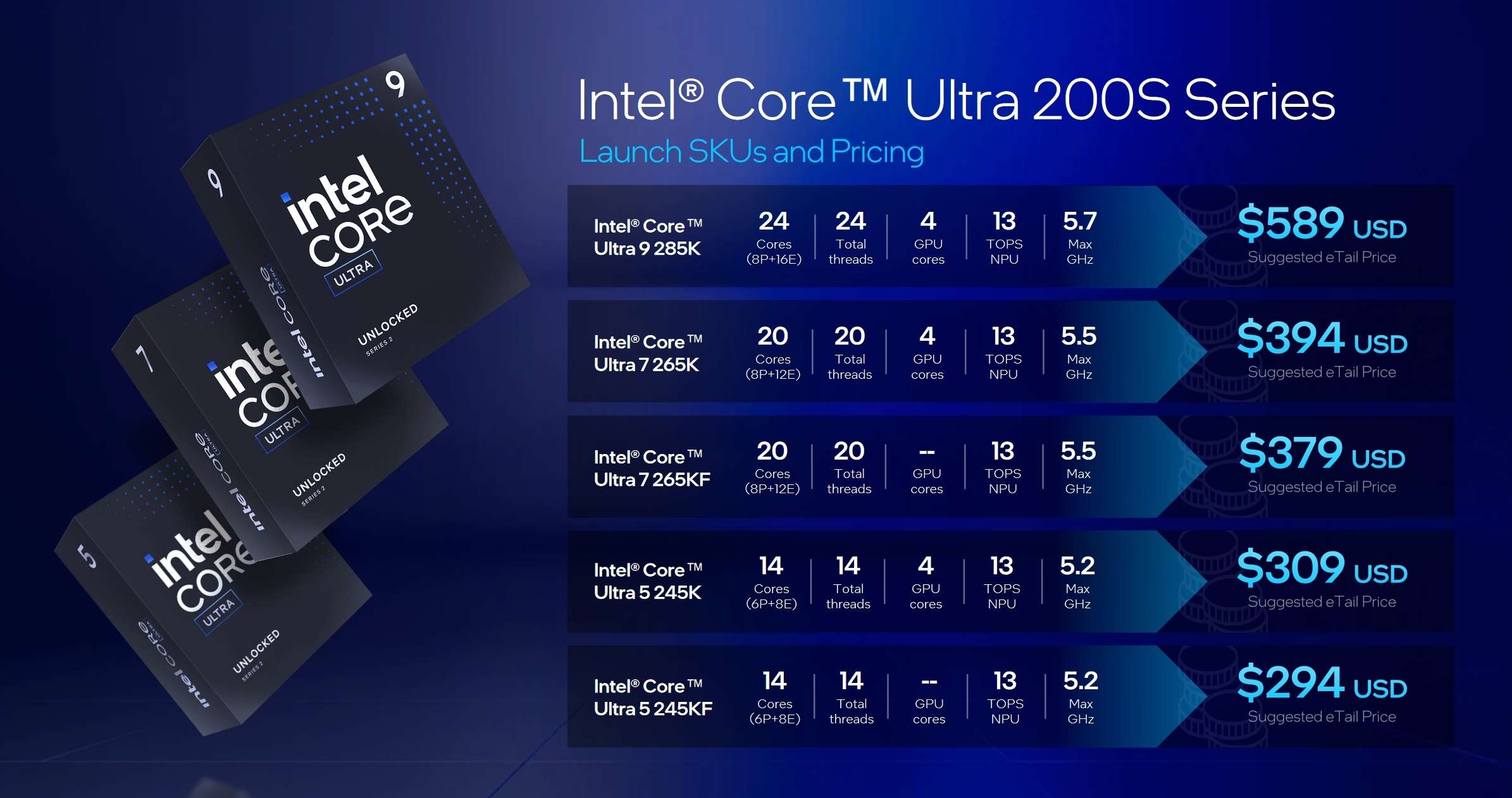
| P-nuclei | E-cores | Streams | P-core frequency, GHz | E-core frequency, GHz | L2/L3 cache, MB | Consumption, W | Price, $ | |
|---|---|---|---|---|---|---|---|---|
| Core Ultra 9 285K | 8 | 16 | 24 | 3.7-5.7 | 3.2-4.6 | 40/36 | 125/250 | 589 |
| Core Ultra 7 265K | 8 | 12 | 20 | 3.9-5.5 | 3.3—4.6 | 36/30 | 125/250 | 394 |
| Core Ultra 7 265KF | 8 | 12 | 20 | 3.9-5.5 | 3.3—4.6 | 36/30 | 125/250 | 379 |
| Core Ultra 5 245K | 6 | 8 | 14 | 4.2-5.2 | 3.6-4.6 | 26/24 | 125/159 | 309 |
| Core Ultra 5 245KF | 6 | 8 | 14 | 4.2-5.2 | 3.6-4.6 | 26/24 | 125/159 | 294 |
- Core Ultra 9 285K is a flagship processor with 8 P and 16 E cores and a maximum turbo frequency of 5.7 GHz (for comparison, the flagships of previous generations had frequencies of up to 6 GHz and even more).
- Core Ultra 7 265K(F) is a pre-top model with 8 P-cores and 12 E-cores (one of the four clusters with E-cores is disabled) and a turbo frequency of 5.5 GHz.
- Core Ultra 5 245K(F) are currently the youngest models of the family with the number of P-cores reduced to 6 and only eight E-cores (2 of 4 clusters are disabled) with a turbo frequency of up to 5.2 GHz.
Specification
| Supported Processors | Intel Core Ultra 2xx |
|---|---|
| Processor socket | LGA 1851 |
| Chipset | Intel B860 |
| Memory | 2×DDR5, up to 9066MT/s (XMP), up to 128256GB, dual-channel (DIMM/CUDIMM) |
| Audio subsystem | 1 × Realtek ALC897 (7.1) |
| Network controllers | 1× Realtek RTL 8125BG Dragon Ethernet 2.5Gbps 1×Intel Dual Band Wireless AX211 (Wi-Fi 6E 802.11a/b/g/n/ac/ax (2.4/5/6GHz) + Bluetooth 5.3) |
| Expansion slots | CPU – 1×PCIe 4.0 x16 Chipset – 1 x PCIe 4.0 x1 slots – 1 x PCIe 4.0 x4 slots |
| Storage connectors | CPU -M.2_1 slot (Key M), type 2242/2260/2280 (supports PCIe 5.0 x4 mode 128 Gb/s) Chipset: M.2_2 slot (Key M), type 2280 (supports PCIe 4.0 x4 mode) -4 x SATA 6Gb/s ports * Intel® Rapid Storage Technology supports SATA RAID 0/1/5/10. |
| USB ports | CPU: – 1 x USB 3.2 Gen2x2 Type-C (Rear) Chipset: – 1 x USB 3.2 Gen1 Type-C (Front) – 5 x USB 3.2 Gen1 Type-A (3 Rear, 2 Front) – 6 x USB 2.0 (2 Rear, 4 Front) |
| Rear panel connectors | – 2 x Antenna Ports – 1 x HDMI Port – 1 x DisplayPort 1.4 – 1 x USB 3.2 Gen2x2 Type-C Port (20 Gb/s) – 3 x USB 3.2 Gen1 Ports – 2 x USB 2.0 Ports – 1 x RJ-45 LAN Port – 1 x BIOS Flashback Button – HD Audio Jacks: Line in / Front Speaker / Microphone |
| Other internal elements | 1x 24-pin ATX power connector 1x 8-pin EPS12V power connector 1x 4-pin EPS12V power connector |
| Form factor | MATX (244 × 226 mm) |
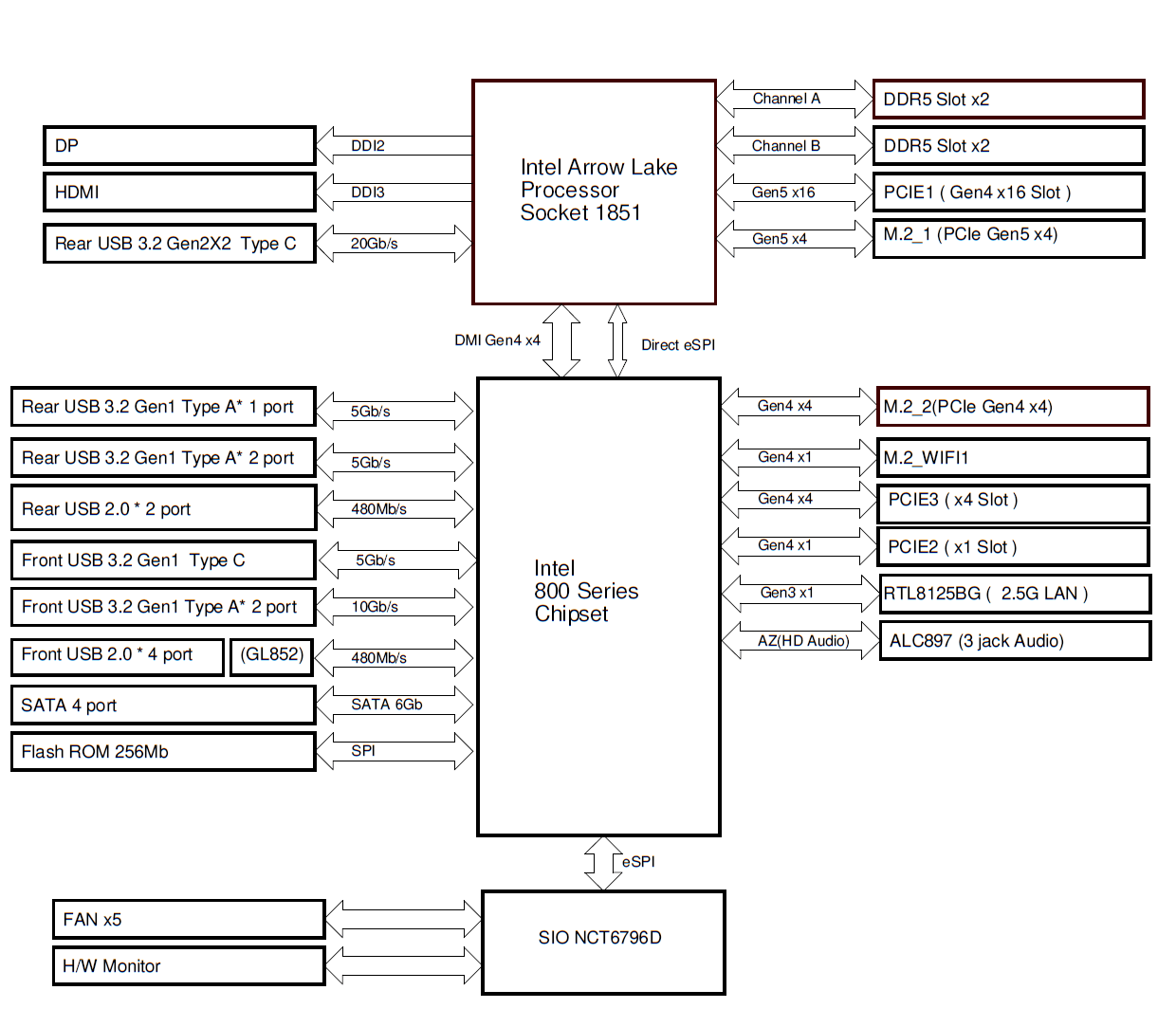 Peripheral functionality: USB ports, network interfaces, I/O
Peripheral functionality: USB ports, network interfaces, I/O
Now it’s the turn of USB ports and other I/O. And let’s start with the back panel, where most of them are displayed.
On the back I/O panel of connections including 1x DisplayPort 1.4 (iGPU), 1x HDMI 2.1 (iGPU), 1 x USB-C 3.2 Gen2x2 (20Gb/s), 3x USB 3.2 Gen1 (5Gb/s), 2 x USB-A 2.0 (480Mb/s), 1x 2.5GBase-T (RealTek) and Intel WiFI 6E. Also present on the rear panel feature for the bios flashback is included.
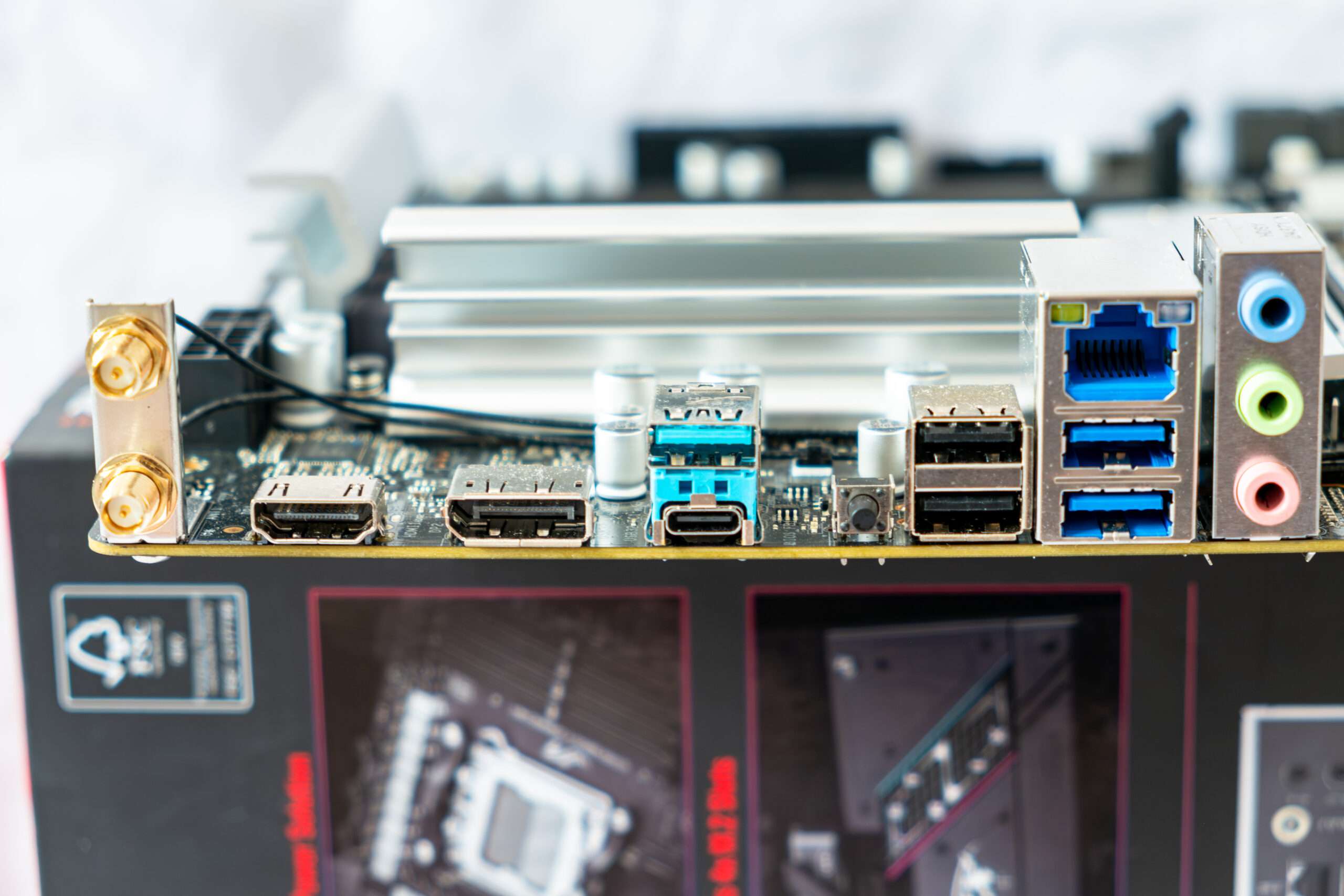
The board has four DIMM slots for installing memory modules. The board supports unbuffered DDR5 (non-ECC) memory, and the maximum memory capacity is 128 GB. Of course, XMP profiles are supported.
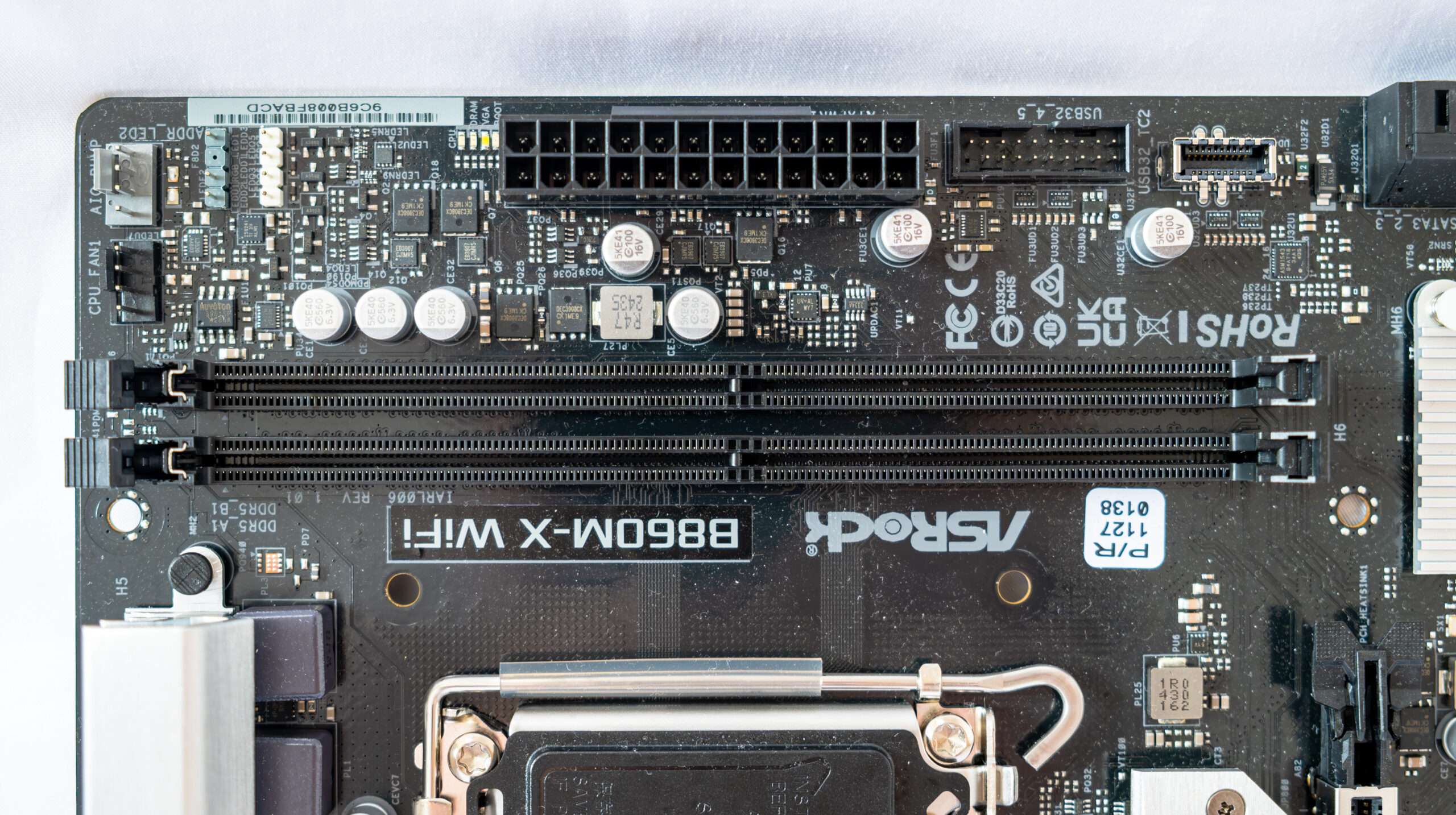
On the side of the motherboard, there are four Serial ATA 6 Gb/s ports, which are integrated through the B860 chipset and support RAID configurations.
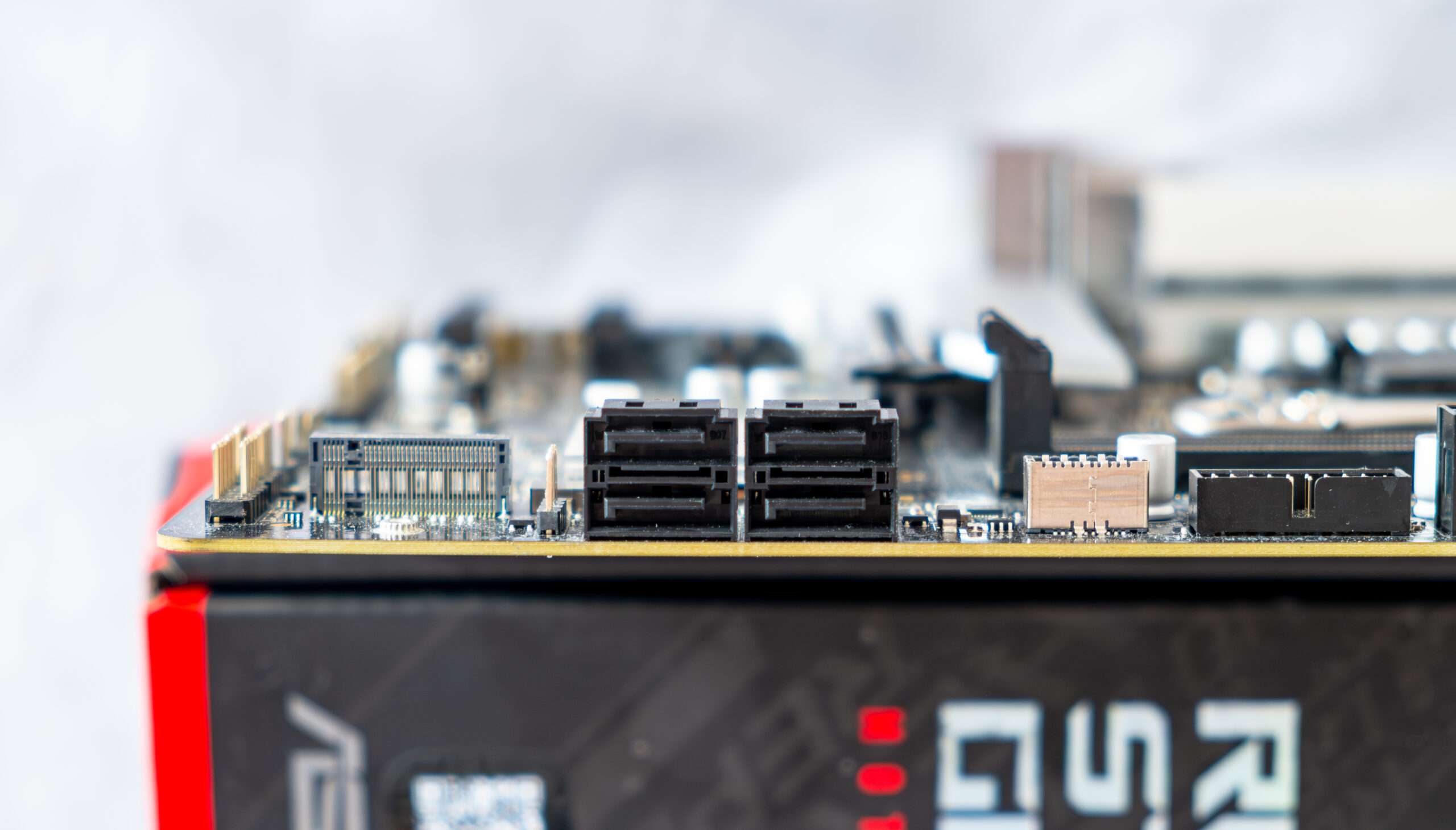
The PCIe x16 slot has stainless steel reinforcement that increases durability (which can be important if you change graphics cards quite often, but more importantly, such a slot can more easily withstand bending loads in case of installing a very heavy top-level graphic card. In addition, such protection protects the slot from electromagnetic interference.

There are one 8-pin and 4-pin EPS12V connectors supplying power to the processor
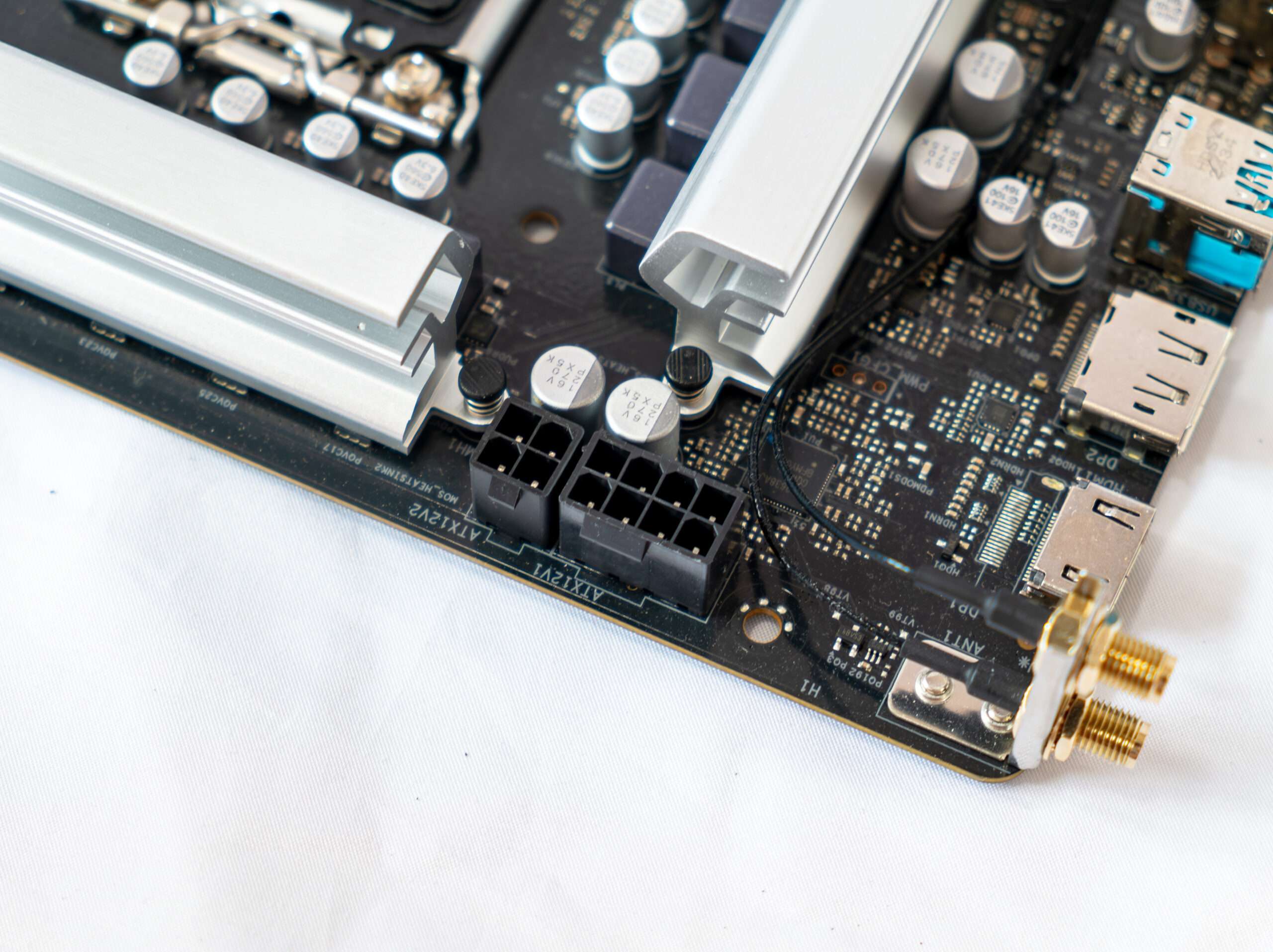
The ASRock B860M-X WIFI motherboard is a low-range board, but it does feature robust cooling for its MOSFETs. MOSFETs are an essential component of the motherboard’s power delivery system, responsible for regulating and supplying power to the CPU. ASRock has implemented heatsinks in the vicinity of the MOSFETs to aid in heat dissipation. These cooling features can contribute to better overall system stability and longevity, particularly when the motherboard is subjected to heavy loads or extended usage.
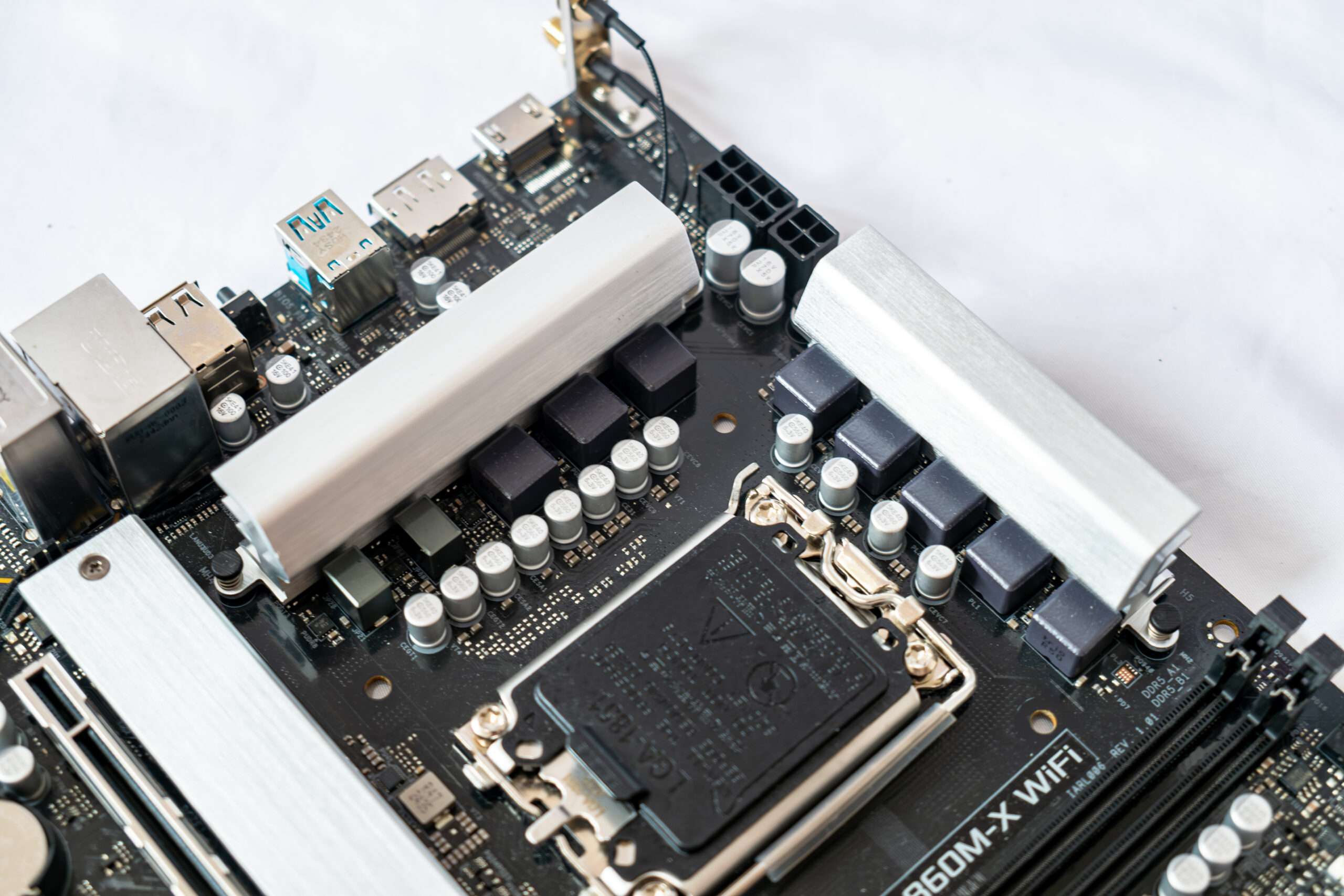
Power Phase Design & Component
The power supply unit is a 7+1 +1 +1 phase configuration. On this board, ASRock used Potens Semiconductor traditional N-Channel MOSFETs. The VRM controller is a Richtek RT3638AJ and it is located on the top side of the board.
- Notice: During our testing with the Intel Ultra 9 285K, the 7-phase power design struggled to sustain the 250W TDP due to extremely high VRM temperatures, reaching the 87°C thermal limit. As a result, performance was constrained. We recommend pairing this motherboard with a Intel Ultra 7 or Intel Ultra 5 for optimal stability and efficiency.
- Notice: After adding a 120mm fan direct blow at the VRM surface and the boost clock increase and we did not see any throttle in the boost clock.
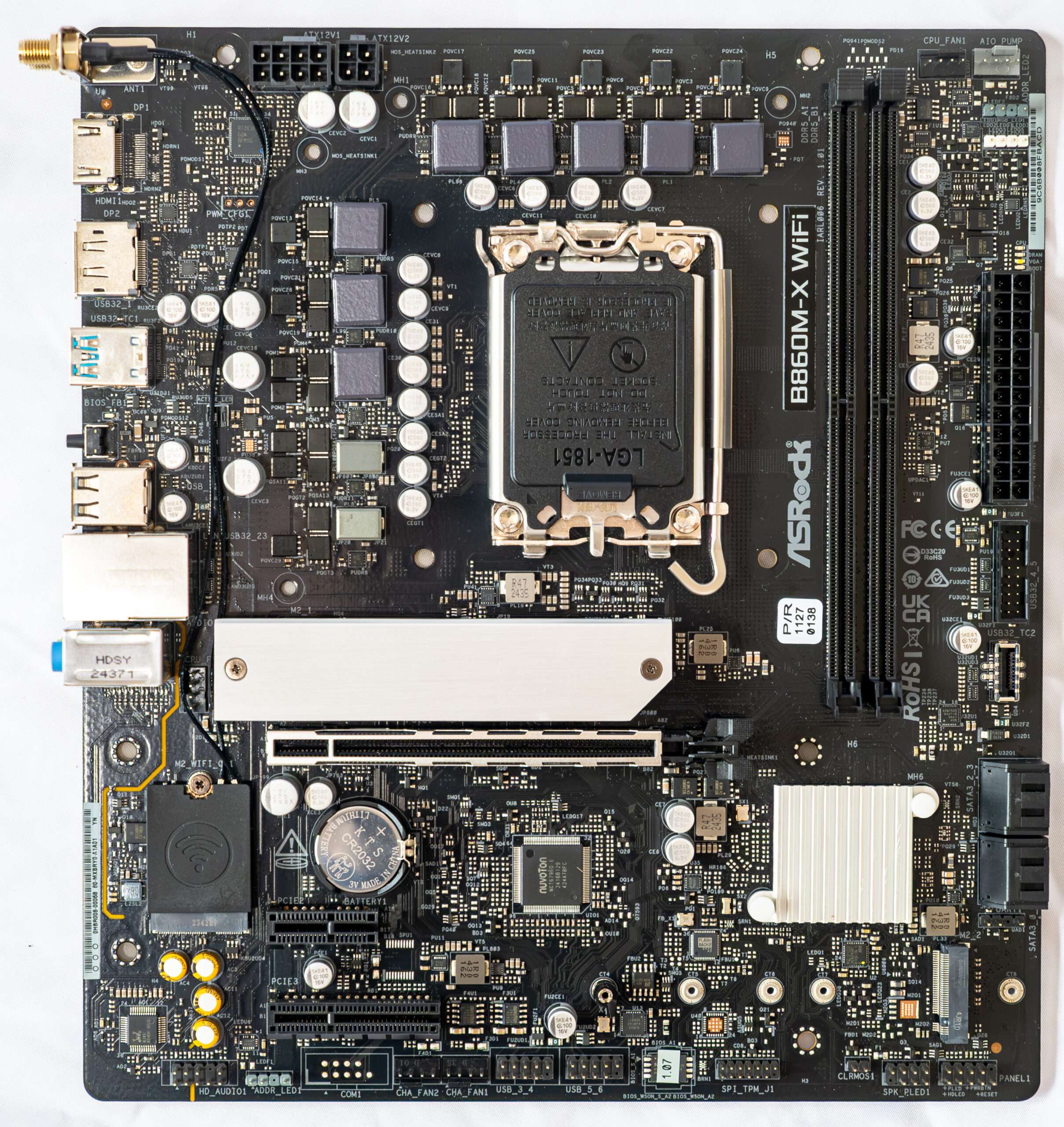
The processor power supply circuit is designed according to the 7+1+1+1 scheme (a total of 10 phases: 7 on VCore (processor core), 1 on iGPU (integrated graphics core), 1 on VCCSA (System Agent, ring bus) and 1 on VNNAON (power saving management).
- Ten VCore phase N-channel has High DEC3908CX and Low DC39F2BX from Potens Semiconductor
- One VCCGT phase N-channel has High DEC3908CX and Low DC39F2BX from Potens Semiconductor
- One VCCSA phase N-channel has High DEC3908CX and Low DC39F2BX from Potens Semiconductor
- One VCCAON phase N-channel has High DEC3908CX and Low DC39F2BX from Potens Semiconductor
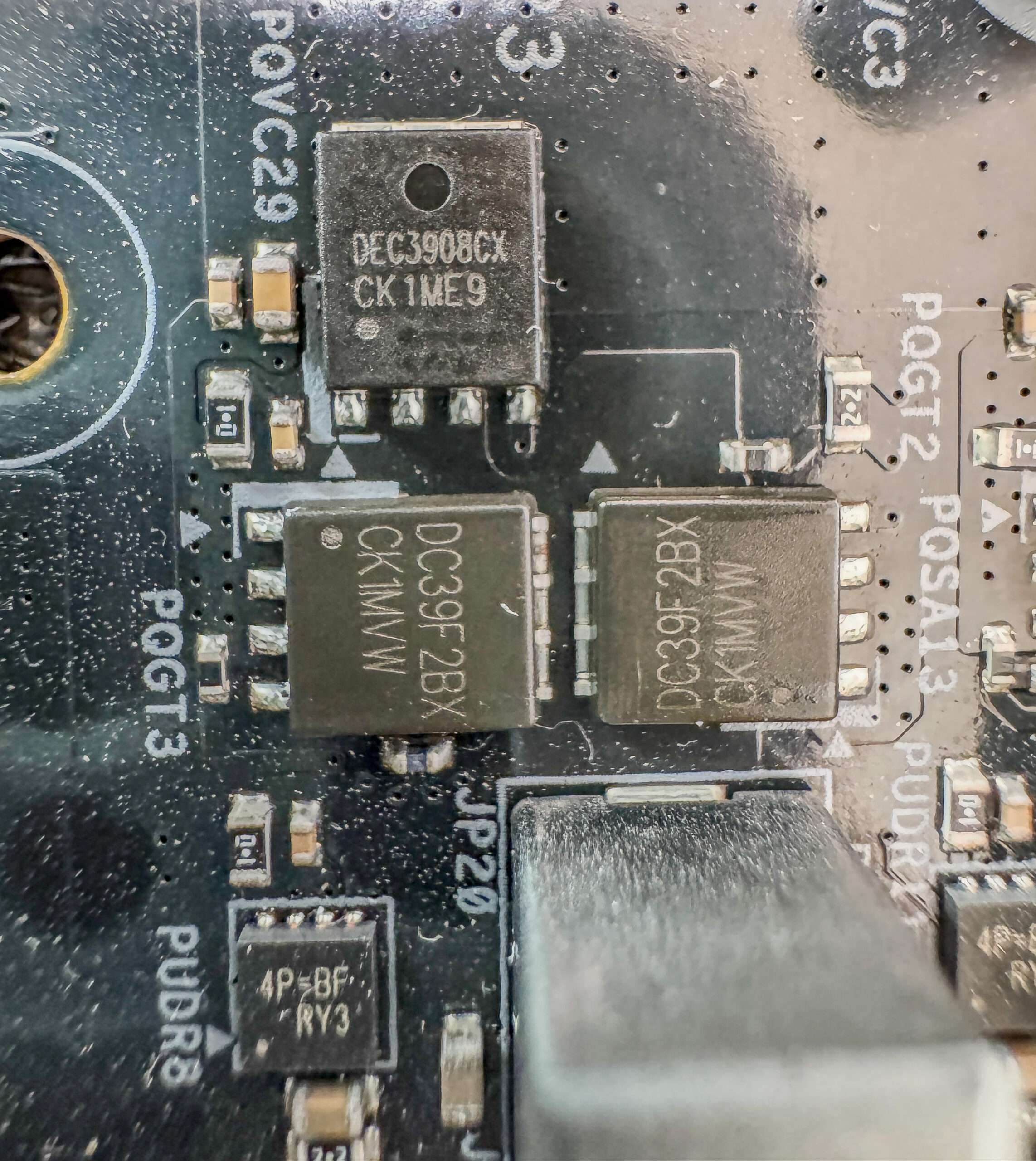
The control of the VCore, VNNAON, and iGPU circuits is managed by the Richtek RT3638AJ PWM controller.
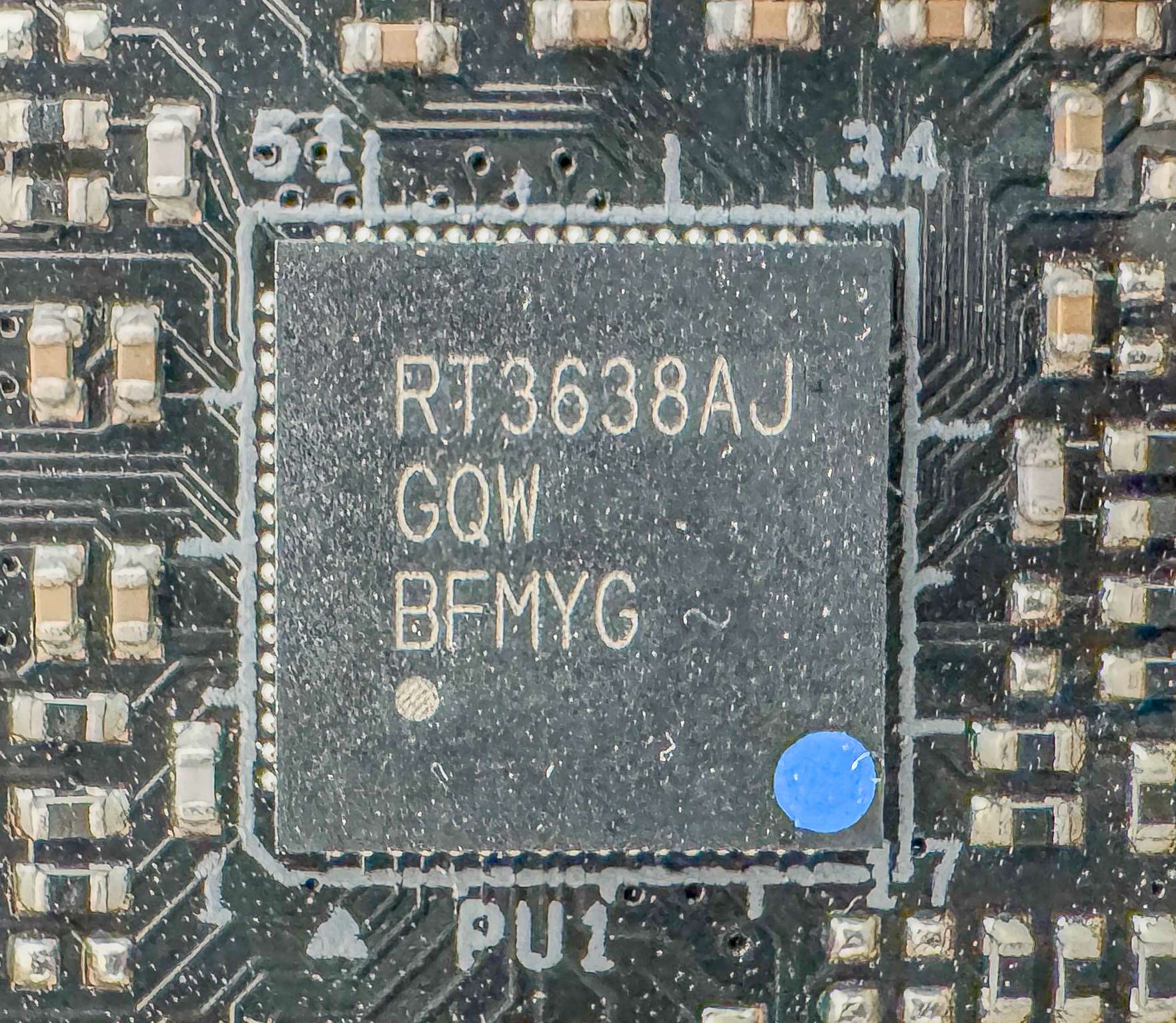
The NUC121ZC2 controller from Nuvoton (monitoring), as well as NCT6796 from the same Nuvoton (Multi I / O), are closely related to it. The FAN Tuning utility is responsible for the control of the entire set of fans / pumps, and control is also implemented in the UEFI / BIOS settings.
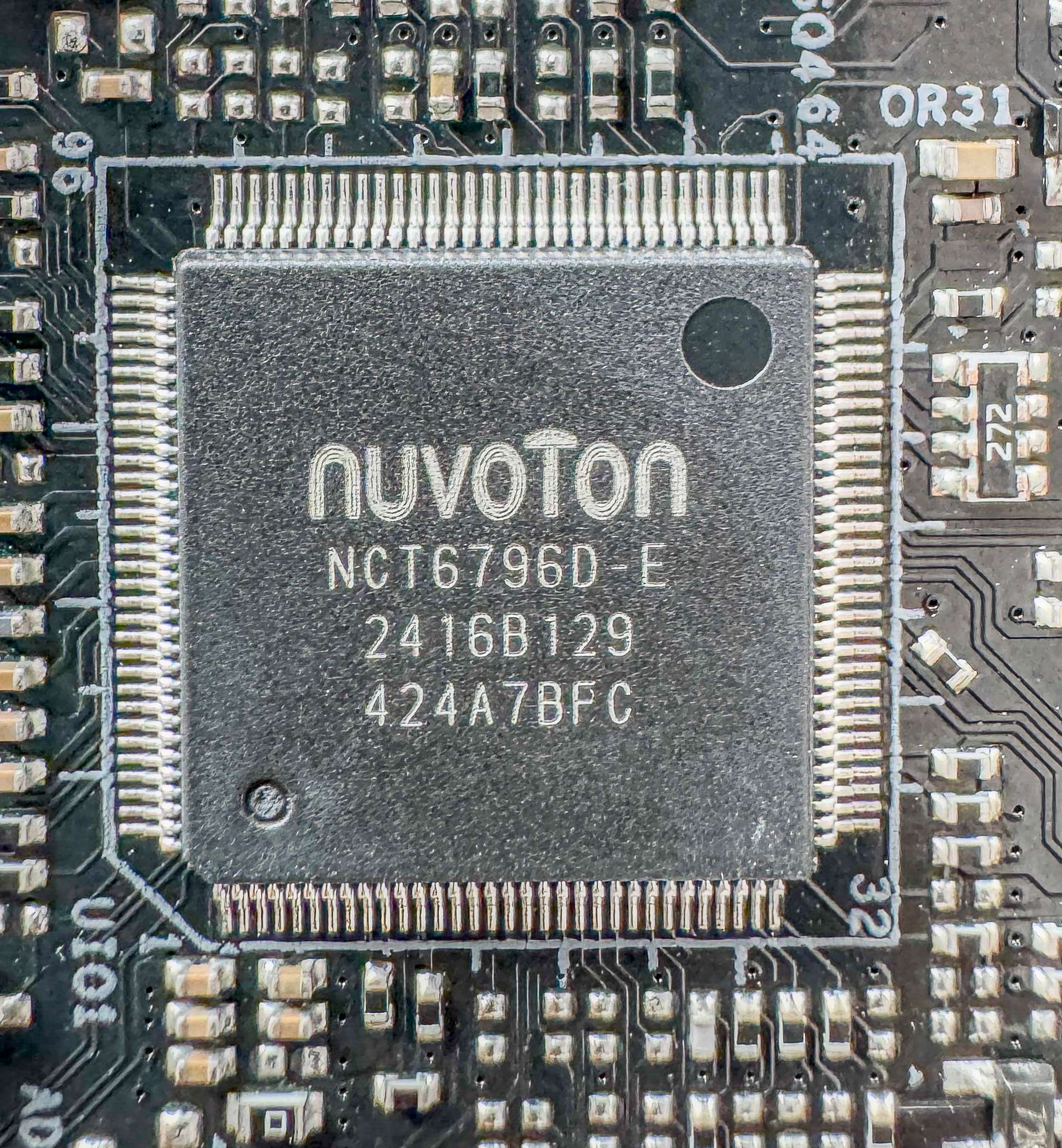
The NUC121ZC2 chip from Nuvoton is responsible for synchronizing RGB/ARGB lighting and also serves as a monitoring controller for the motherboard, overseeing its operational status. This ARM-based chip ensures stable lighting effects and system health management.
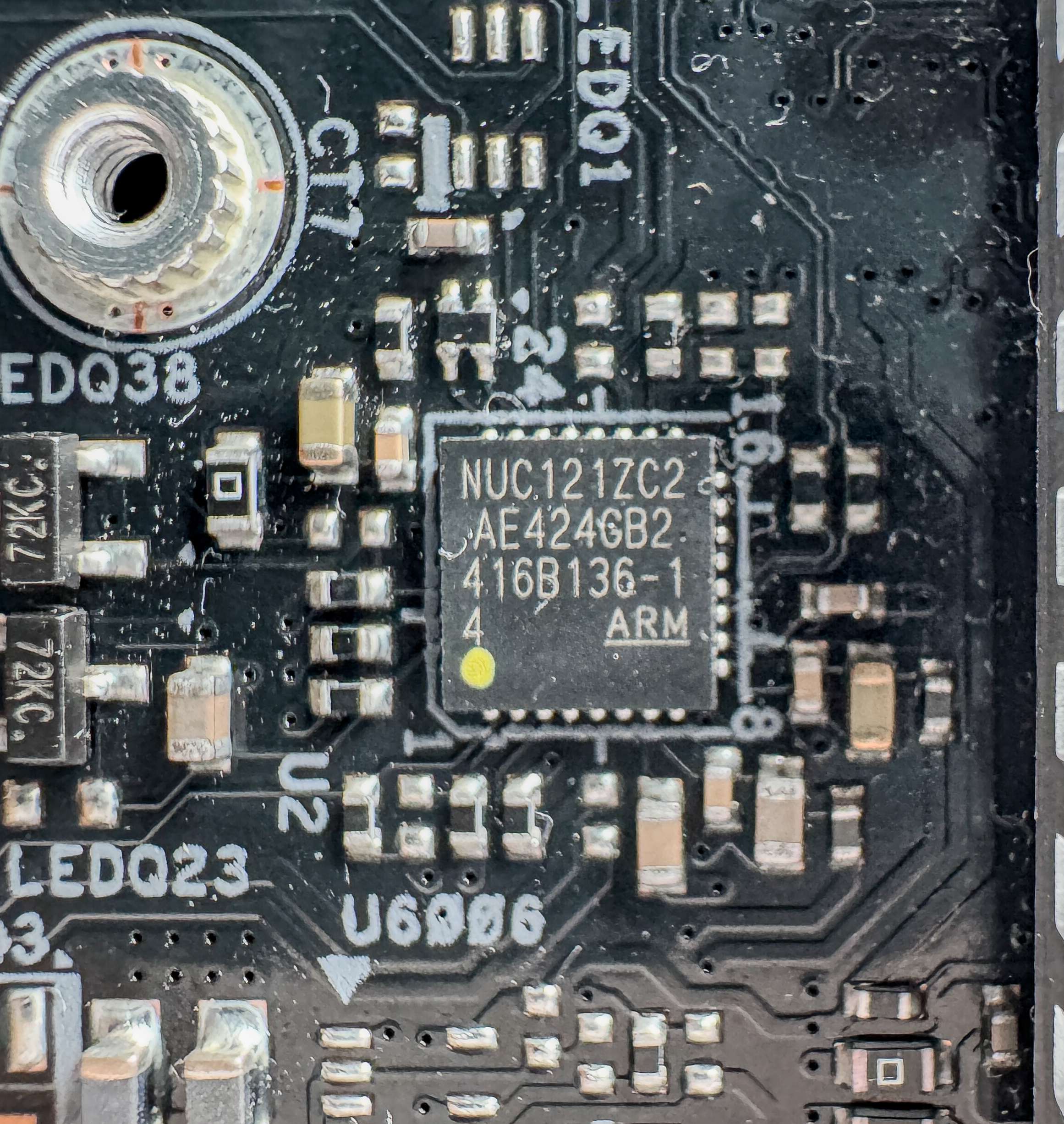
- Flashback 2411 dedicated chip that provides BIOS Flashback function.
- 2x Front Panel USB 2.0 ports implemented via Genesys Logic GL852G controller

The ASMedia ASM1543 controller is a switch chip for USB 3.2 Gen 1 Type C internal header.
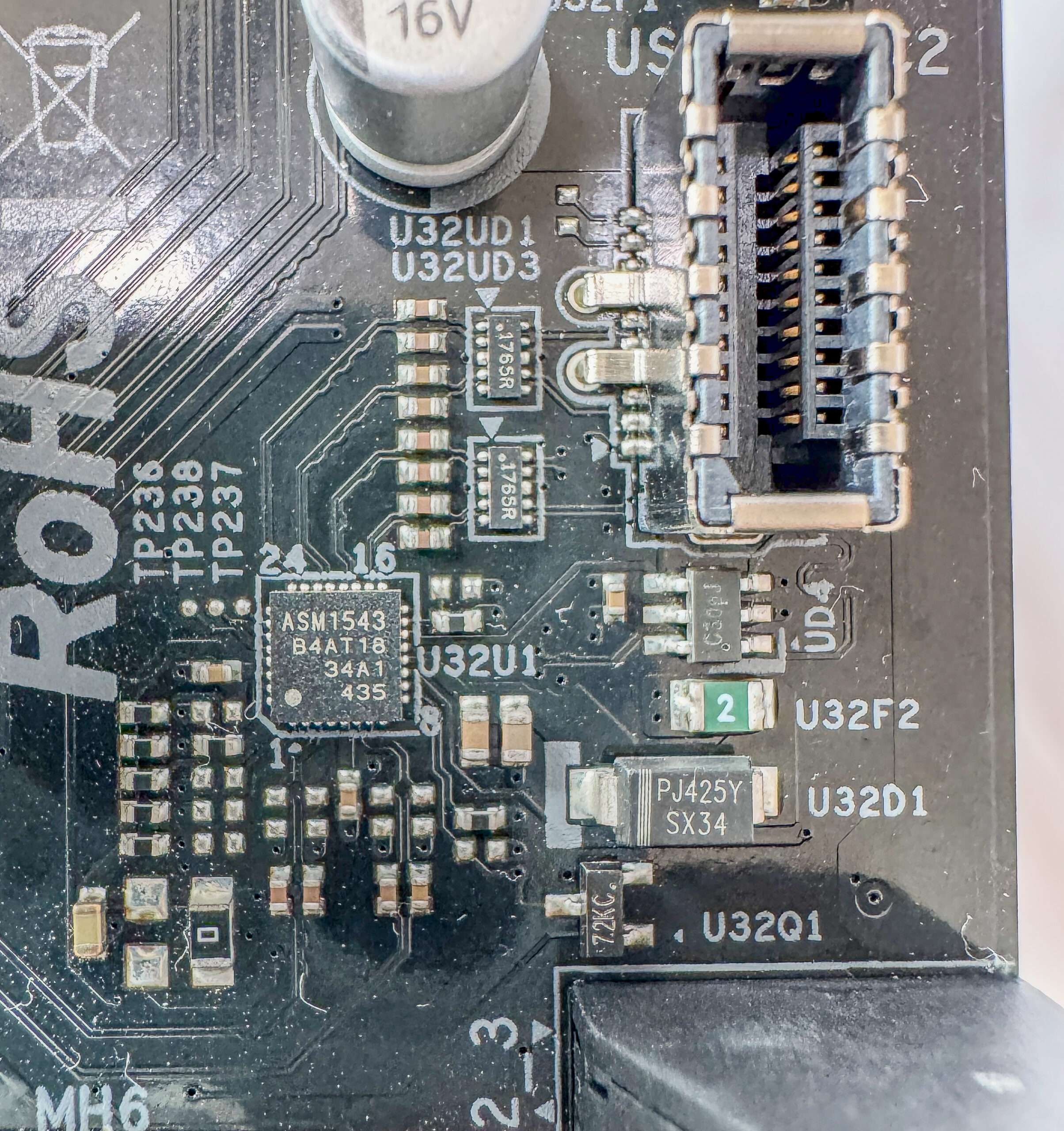
The Realtek RTL8125BG Dragon is a 2.5G Ethernet controller that provides high-speed wired networking support. It enables data transfer rates of up to 2.5 Gbps over standard Ethernet connections, offering improved performance compared to the traditional 1Gbps network controllers, making it ideal for high-bandwidth tasks like gaming, video streaming, and large file transfers.
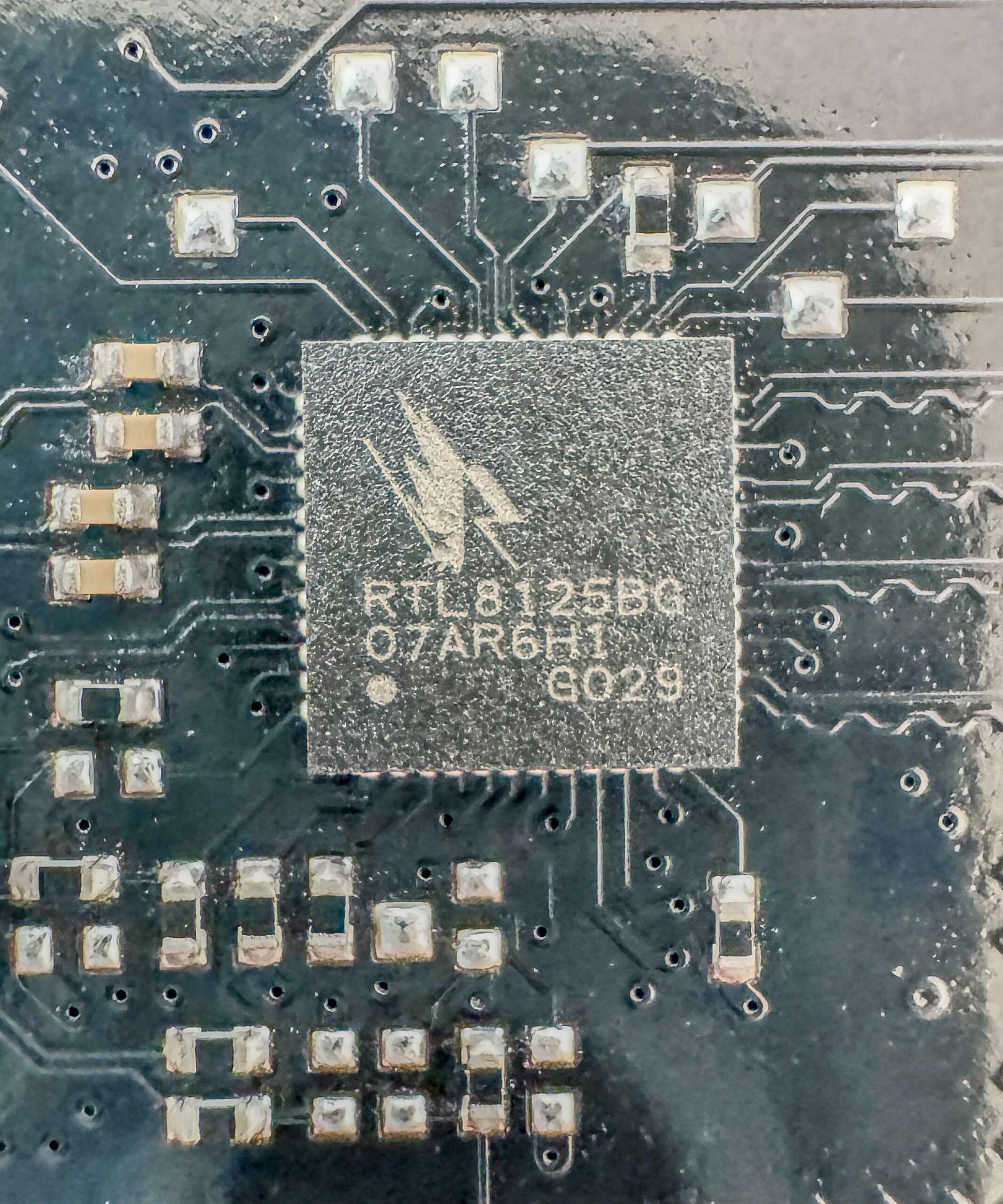
The wireless adapter on the Intel AX211NGW controller enables Wi-Fi 6E (802.11a/b/g/n/ac/ax), supporting 2.4GHz, 5GHz, and 6GHz bands, along with Bluetooth 5.3. It is installed in the M.2 slot (E-key) on the motherboard, and the connectors for external antennas are located on the rear panel, ensuring efficient wireless connectivity and signal reception.
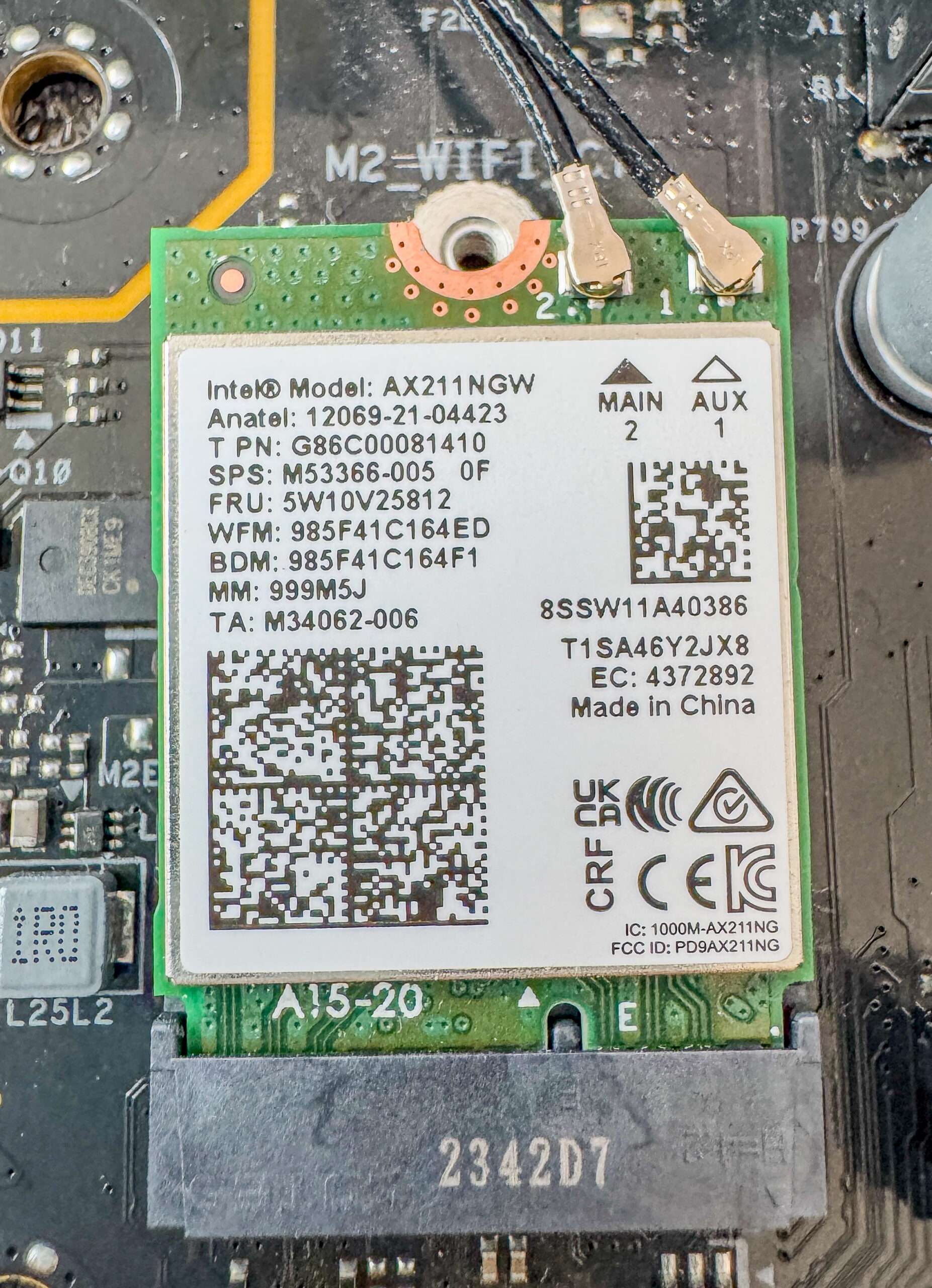
In this case, the board is equipped with an audio subsystemand Nichicon Fine Gold audiophile capacitors, where the sound is controlled by the Realtek ALC897 audio codec, it generally provides sound output according to circuits up to 7.1 with a resolution of up to 24 bit / 192 kHz. Do not forget that such a codec requires USB 2.0 signal lines to operate. The Realtek ALC897 is essentially a similar chipset to the Realtek ALC892, both of which are mid-range audio solutions from Realtek. They offer mid performance for everyday audio needs but are positioned below the higher-end ALC1220 and other premium audio chips in Realtek’s lineup.
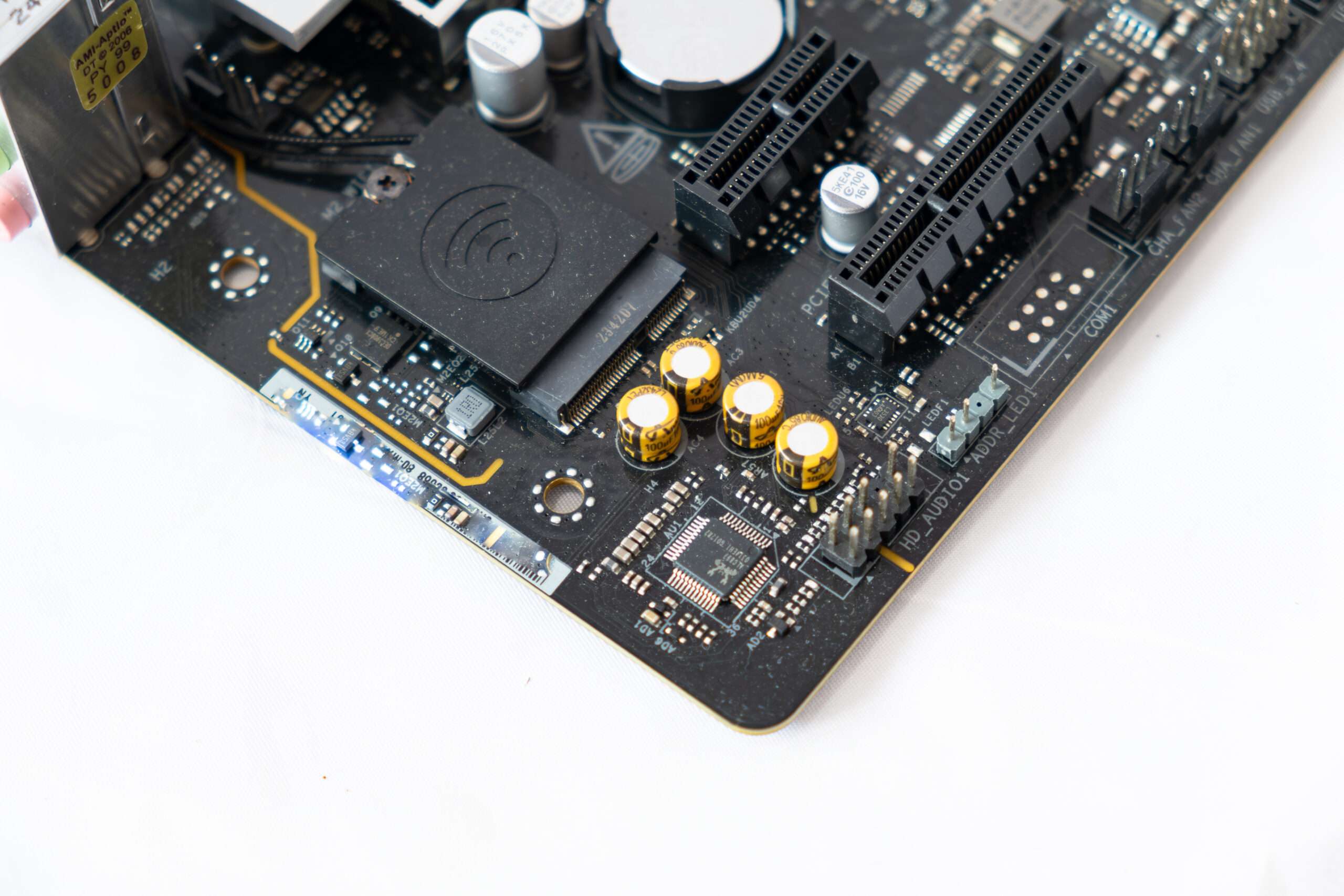
How We Test ASRock B860M-X WIFI?
Intel B860M-X WIFI is a low-mid range motherboard from ASRock. As such, our workstation, based on an B860M-X WIFI motherboard and Intel Ultra 9 24 cores 24 threads processor. The ram we will be using KLEVV DDR5 7200Mhz memory kit. ASUS ROG STRIX RTX4080 and ADATA PCIe 4.0 1TB SSD is used as well to run with benchmark. On the Comparison, we will be using 3 systems to run side by side to see perform better.
| System 1 | System 2 | System 3 | |
| Motherboard | ROG Z790 APEX ENCORE | ASRock B850M-X WIFI | ASRock B860M-X WIFI |
| Processor | Intel Core i9 13900K Delid Copper ISH @6Ghz offset -0.03 | AMD Ryzen 9 9950X | Intel Ultra 9 285K |
| Ram | ADATA DDR5 32GB 6000Mhz CL30 | KLEVV DDR5 32GB 7200Mhz CL34 | KLEVV DDR5 32GB 7200Mhz CL34 |
| SSD | Samsung 980Pro 2TB NVMe PCIe Gen4 | Lexar NM790 1TB NVMe PCIe Gen4 | Lexar NM790 1TB NVMe PCIe Gen4 |
| Graphics | ROG STRIX RTX4080 OC | ROG STRIX RTX4080 OC | ROG STRIX RTX4080 OC |
| Cooler | ARTIC Cooling III AIO 360mm With Liquid Metal | EK-D AIO 360 III 360mm With Liquid Metal | EK-D AIO 360 III 360mm With Liquid Metal |
| BIOS | 1801 | 3.2 | 1.12 |
| OS | Windows 11 64bits 24H23 Build 26100.3037 | Windows 11 64bits 24H23 Build 26100.3194 | Windows 11 64bits 24H23 Build 26100.3194 |
System Information
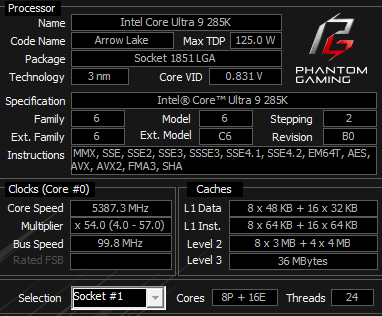
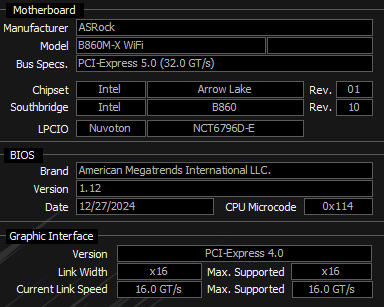
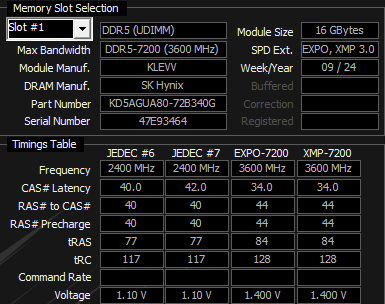
Cinebench R24
Improvements to Cinebench Release 24 reflect the overall advancements to CPU and rendering technology in recent years, providing a more accurate measurement of Cinema 4D‘s ability to take advantage of multiple CPU cores and modern processor features available to the average user
| GPU | CPU Multi Core | Single Core | |
| Core i9 13900K Delid @ 6Ghz | 27225 | 2211 | 133 |
| ASRock B850M-X WIFI | 27537 | 2178 | 138 |
| ASRock B860M-X WIFI | 26515 | 2236 | 144 |
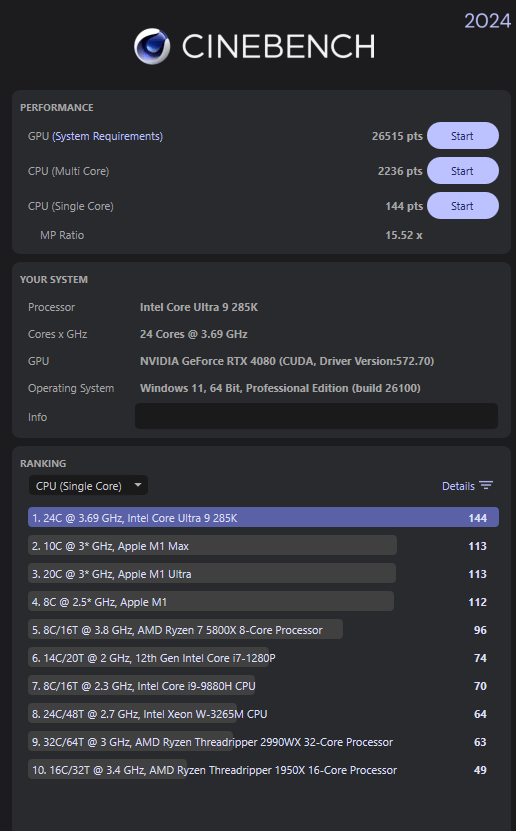
PCMark 10
PCMark 10 features a comprehensive set of tests that cover the wide variety of tasks performed in the modern workplace. With a range of performance tests, custom run options, Battery Life Profile, and new Storage benchmarks, PCMark 10 is the complete PC benchmark for the modern office.
| Essentials | Productivity | Digital Content Creation | Score | |
| Core i9 13900K Delid @ 6Ghz | 11569 | 11819 | 15693 | 9247 |
| ASRock B850M-X WIFI | 11989 | 12581 | 19660 | 10300 |
| ASRock B860M-X WIFI | 11190 | 11029 | 19314 | 9577 |
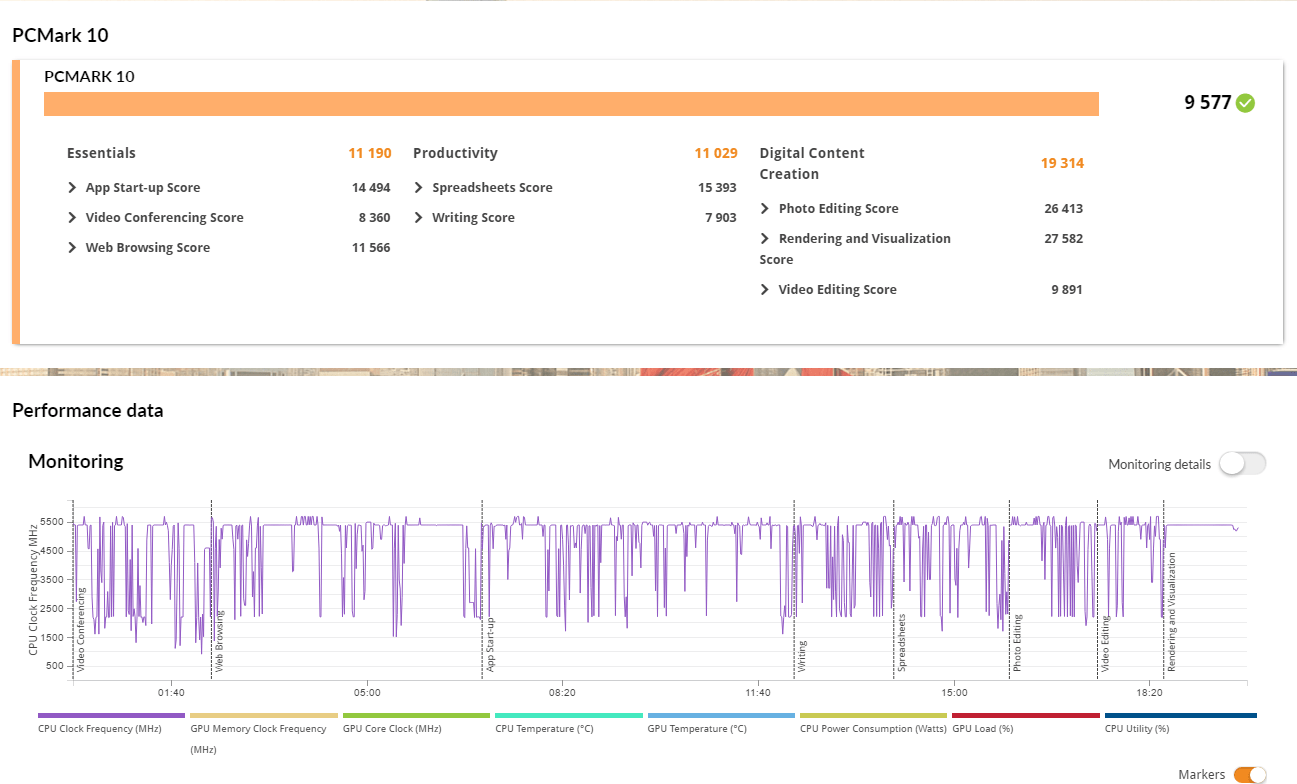
3Dmark Advanced Edition
3DMark includes everything you need to benchmark your PC and mobile devices in one app. Whether you’re gaming on a smartphone, tablet, notebook, or a desktop gaming PC, 3DMark includes a benchmark designed specifically for your hardware.
| Max Threads | 16 Threads | 8 Threads | 4 Threads | 2 Threads | 1 Threads | |
| Core i9 13900K Delid @ 6Ghz | 16334 | 11734 | 8425 | 4540 | 2348 | 1212 |
| ASRock B850M-X WIFI | 15998 | 15631 | 9353 | 5008 | 2568 | 1298 |
| ASRock B860M-X WIFI | 18903 | 14990 | 9772 | 5234 | 2735 | 1401 |
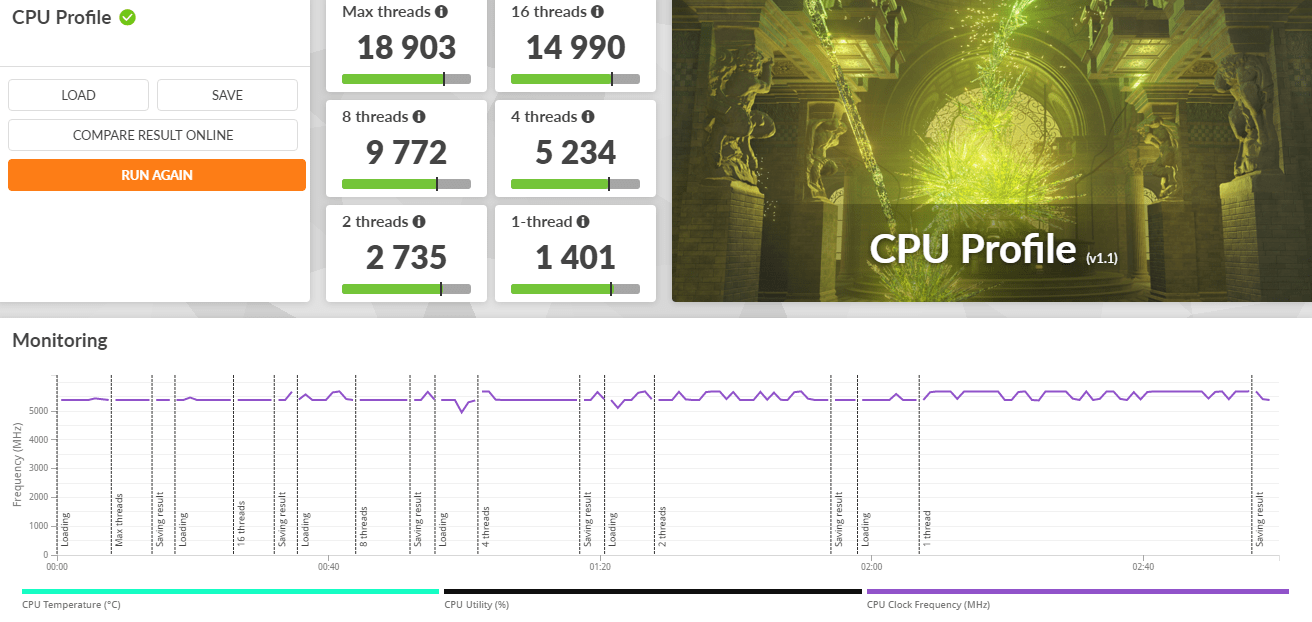
| Core i9 13900K Delid @ 6Ghz | ASRock B850M-X WIFI | ASRock B860M-X WIFI | |
| Fire Strike Ultra | 17619 | 18046 | 17939 |
| Time Spy Extreme | 13739 | 13697 | 14146 |
| Solar Bay | 135018 | 14295 | 13980 |
| Port Royal | 18172 | 18514 | 18380 |
| Steel Nomad | 6675 | 6732 | 6743 |
| Speed Way | 7408 | 7458 | 7480 |
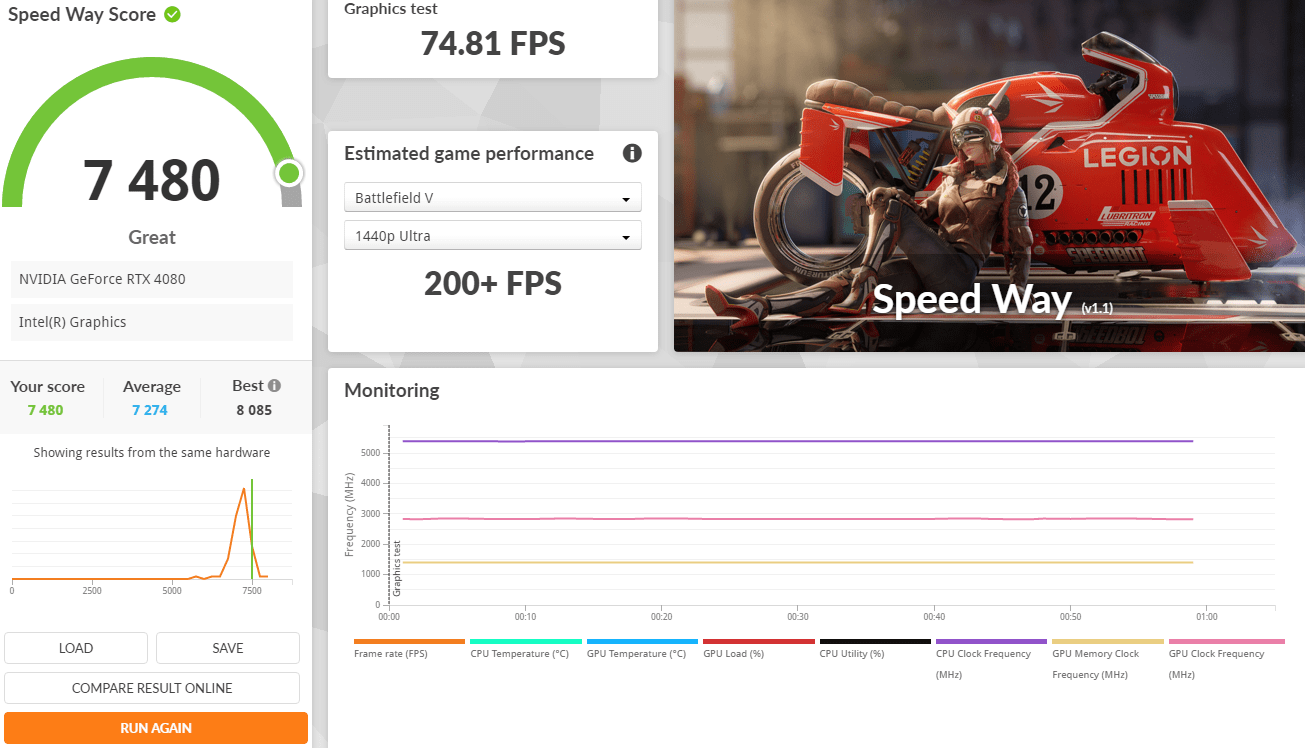
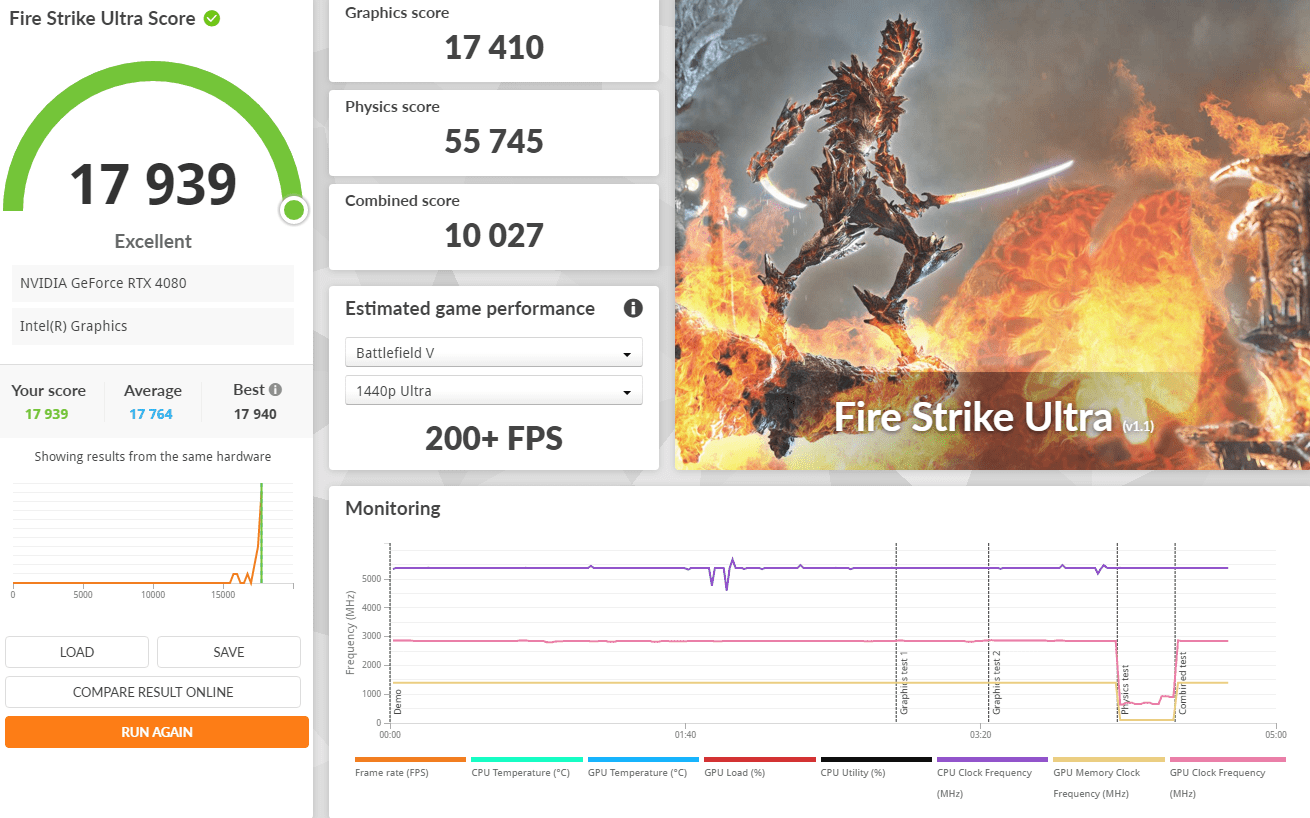
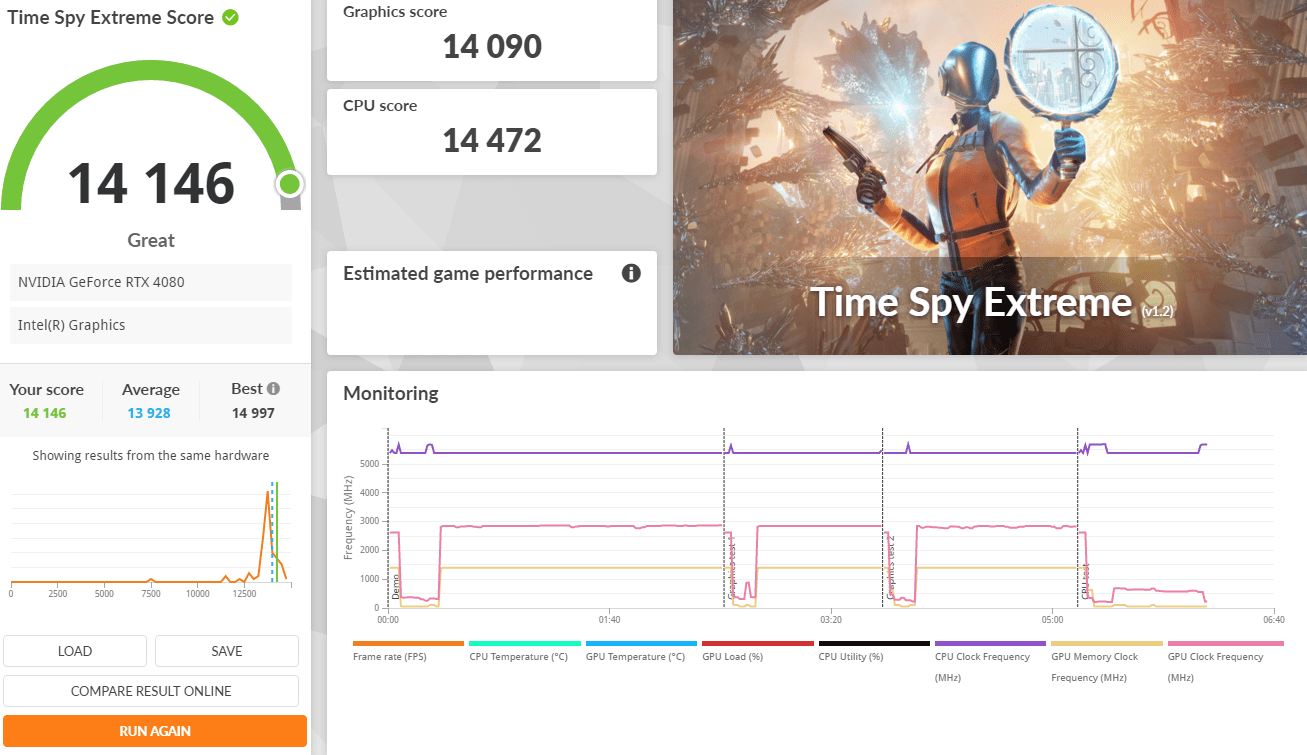
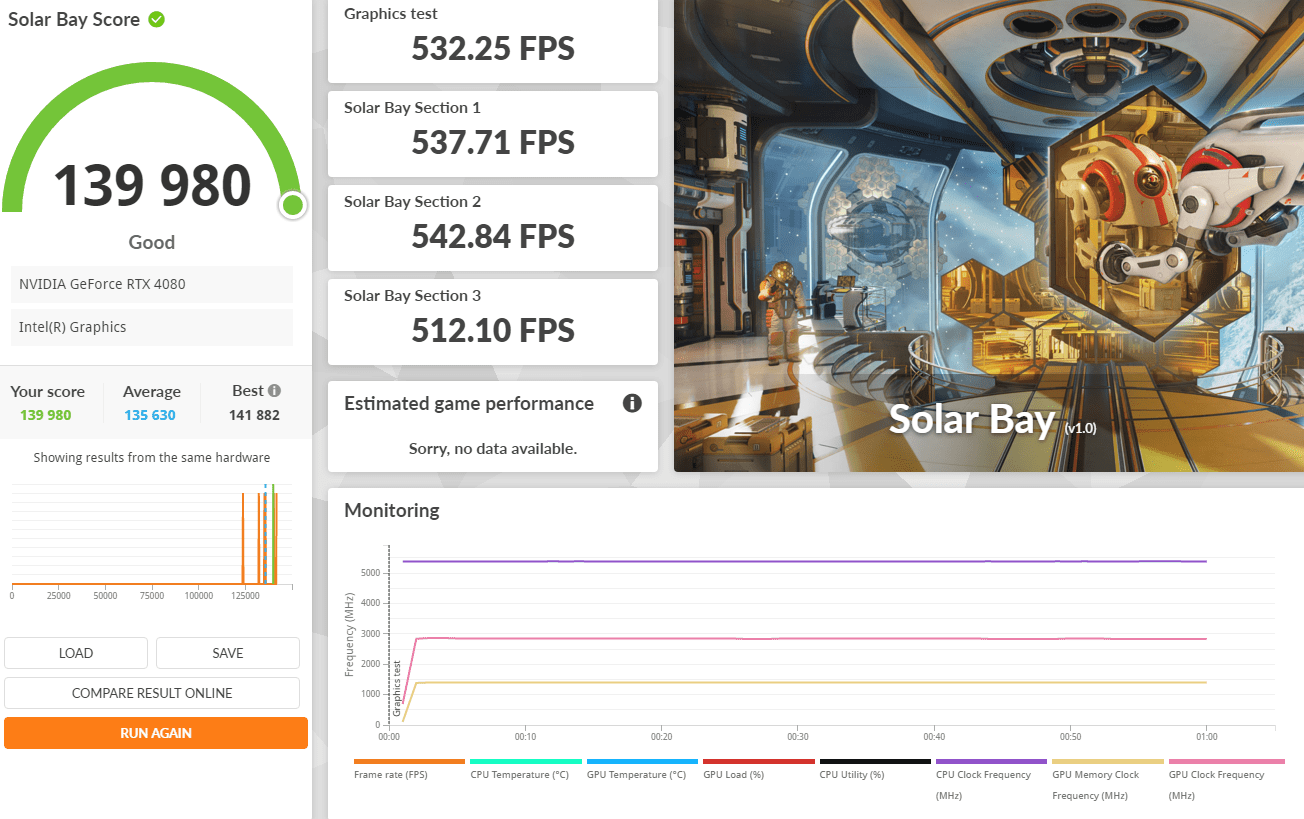
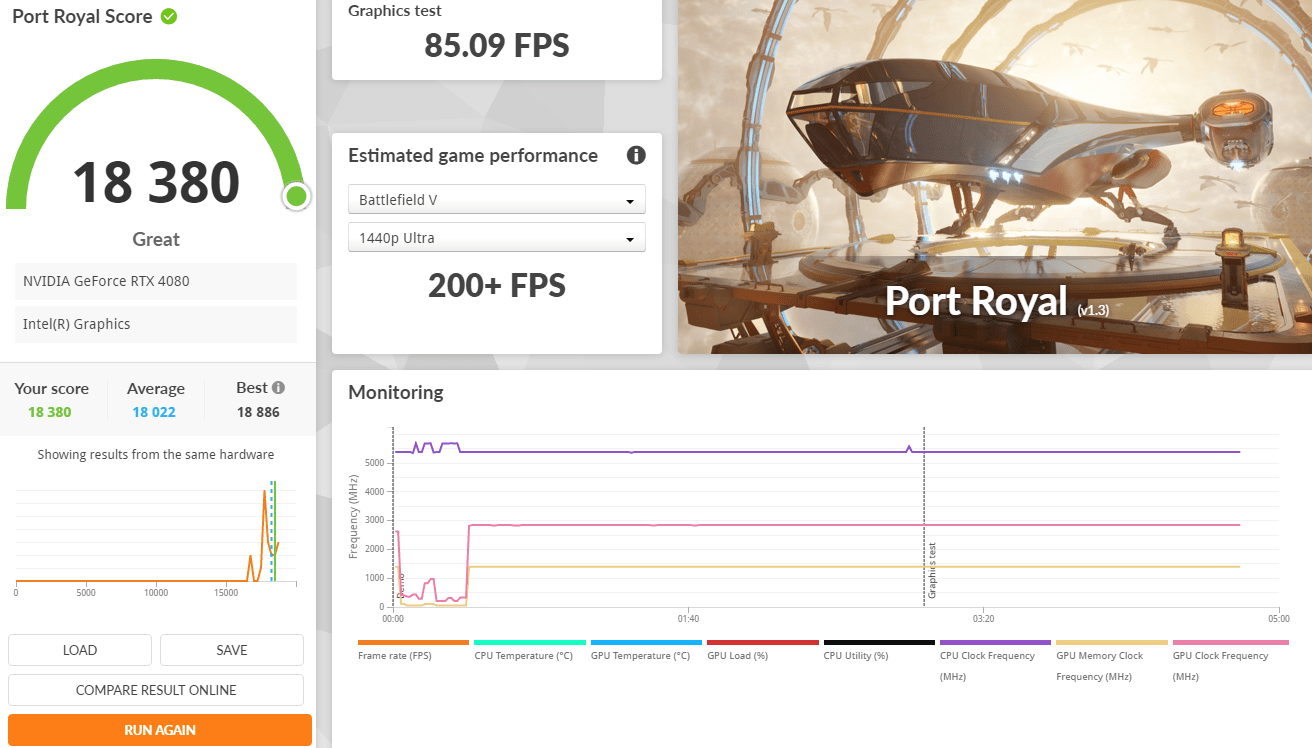

“Black Myth: Wukong”. It evaluates your hardware performance and system compatibility through the real-time rendering of an in-game sequence
| Core i9 13900K Delid @ 6Ghz | ASRock B850M-X WIFI | ASRock B860M-X WIFI | |
| Average FPS | 81 | 38 | 81 |
| Maximum FPS | 95 | 45 | 95 |
| Minimum FPS | 68 | 26 | 66 |
| Low 5th FPS | 71 | 32 | 70 |
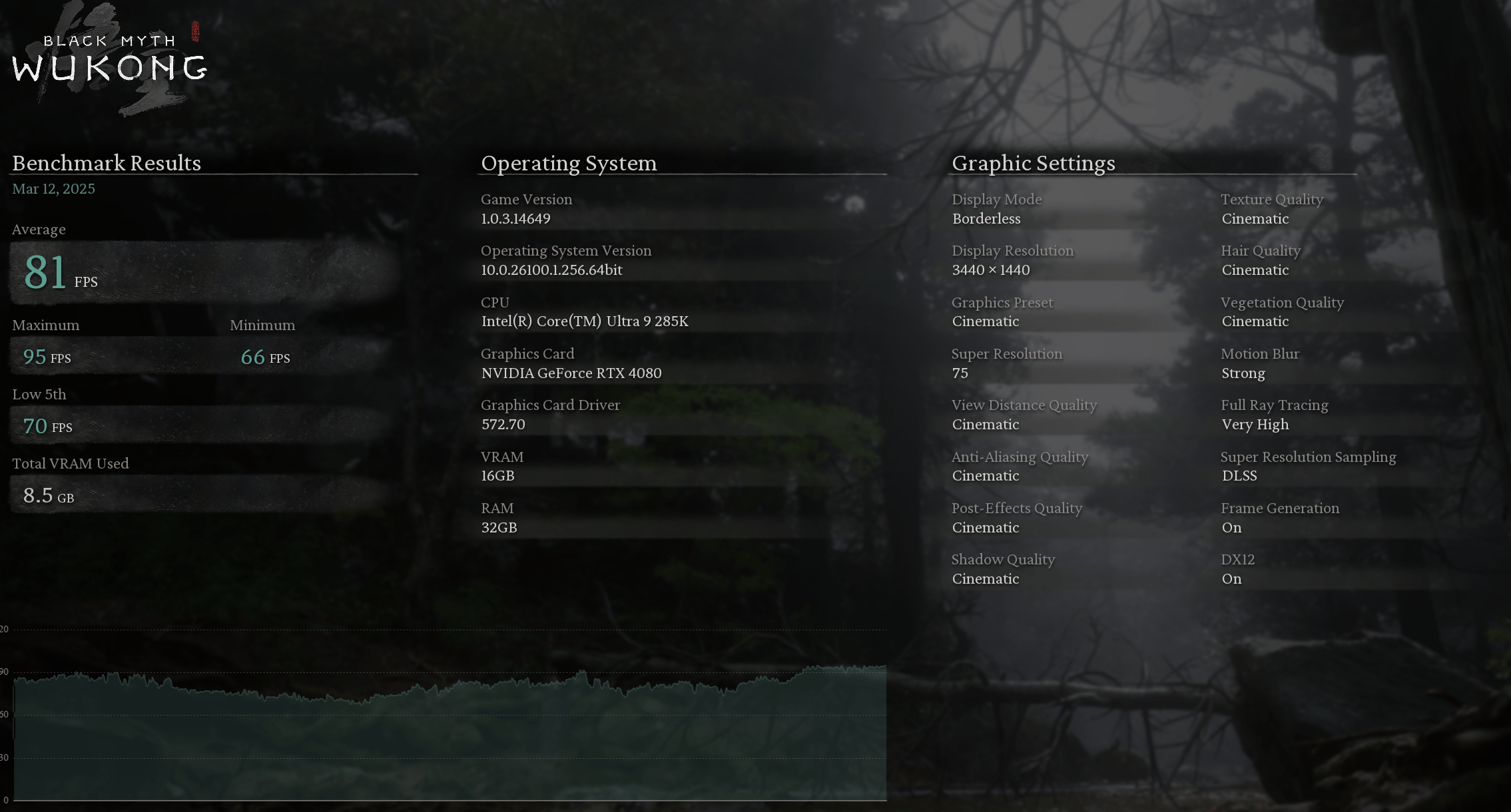
Cyberpunk 2077
Cyberpunk 2077 is an open-world, action-adventure RPG set in the megalopolis of Night City, where you play as a cyberpunk mercenary wrapped up in a do-or-die fight for survival. Improved and featuring all-new free additional content, customize your character and playstyle as you take on jobs, build a reputation, and unlock upgrades. The relationships you forge and the choices you make will shape the story and the world around you. Legends are made here. What will yours be?
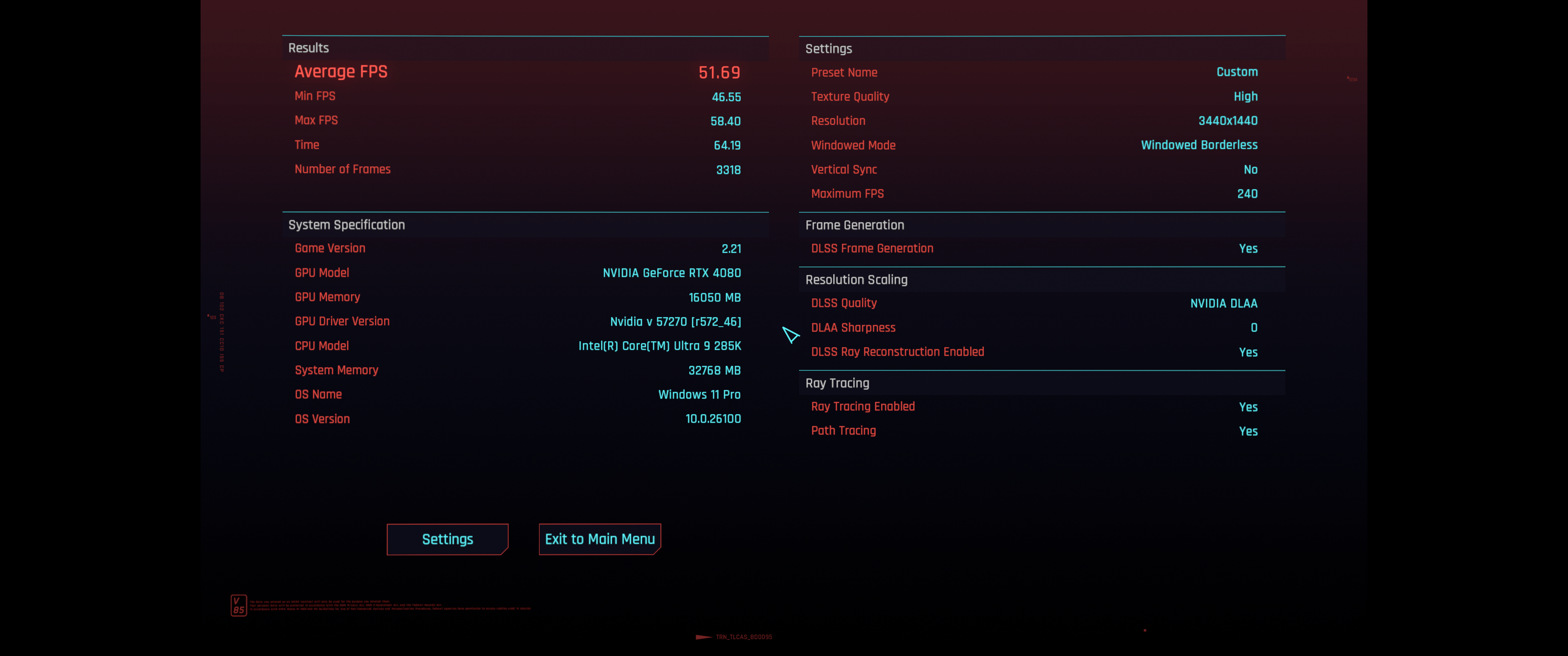
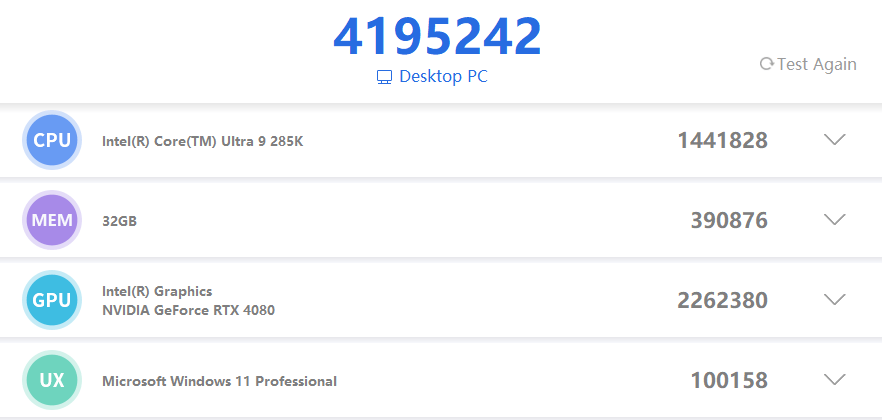
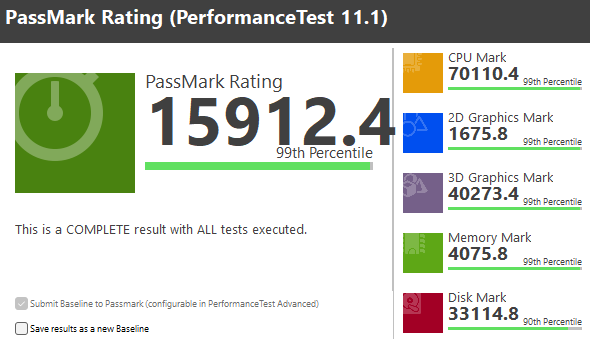
Should you buy ASRock B860M-X WIFI Motherboard?
Purchase: Click Here
Purchase: Click Here
The ASRock B860M-X WiFi offers excellent value for budget-conscious builders, with a solid feature set that includes Wi-Fi 6E, 2.5Gb LAN, PCIe 4.0 support, and DDR5 memory compatibility. However, during testing with the Intel Ultra 9 285K, the 7-phase power design struggled to sustain the 250W TDP, leading to high VRM temperatures and throttled performance. To achieve the best balance of stability and performance, we recommend pairing this motherboard with Intel Ultra 7 or Intel Ultra 5 processors. Despite this limitation, the B860M-X WiFi remains a great choice for users looking for an affordable and feature-packed motherboard for mid-range builds.
